Handa Island – A Bird Lover’s Haven
Last summer, in preparation for driving Scotland’s great new scenic route the North Coast 500, I came across the name of Handa Island, more by happenstance than any foreknowledge on my part. I learned that it had once been a thriving community relying mostly on the bounty of the sea surrounding the island. Then in 1847, at the height of the potato famine, they all packed up and moved to my home province of Nova Scotia where I have no doubt rubbed shoulders with some of their descendants. When I found this out I knew I had to visit it. It was a bonus to find out that today it’s home to one of the largest sea bird colonies in Britain. This post describes the history of Handa, how to get there and what you’ll find once you do land on its remote shores.
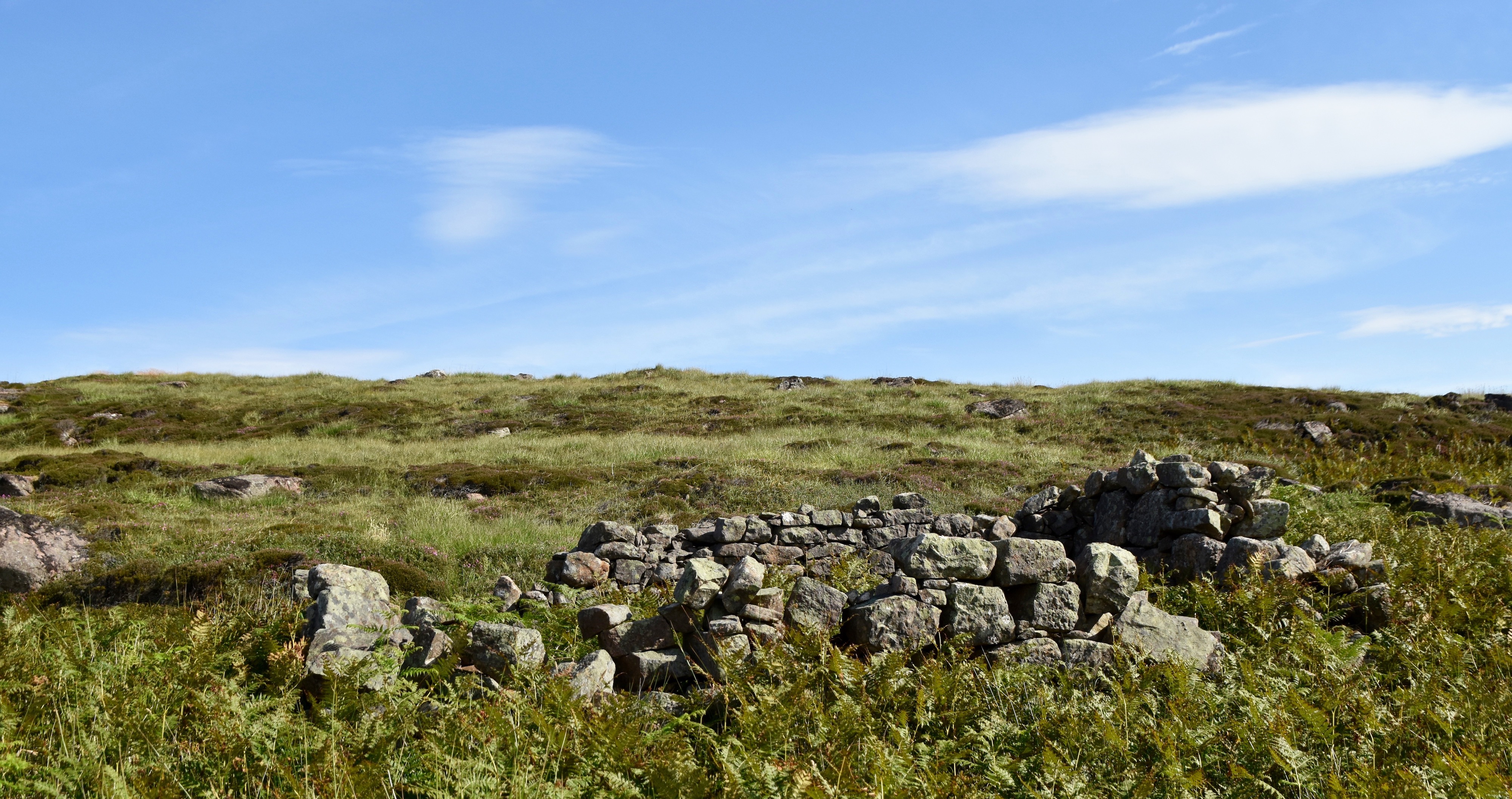
History of Handa
There is surprisingly little information on the web about the history of Handa Island. What I gleaned was from a few sites like the Scottish Wildlife Trust which administers the island today and Visit Scotland.
On the island itself there are a couple of informational panels that provided the background for the departure of all the residents to Nova Scotia in 1847 after which it was officially ‘cleared’ and sheep replaced people. Somewhat surprisingly, the people working as summer volunteers on Handa and those operating the ferry service knew very little about this event and could only speculate on the names of the families who once lived there.
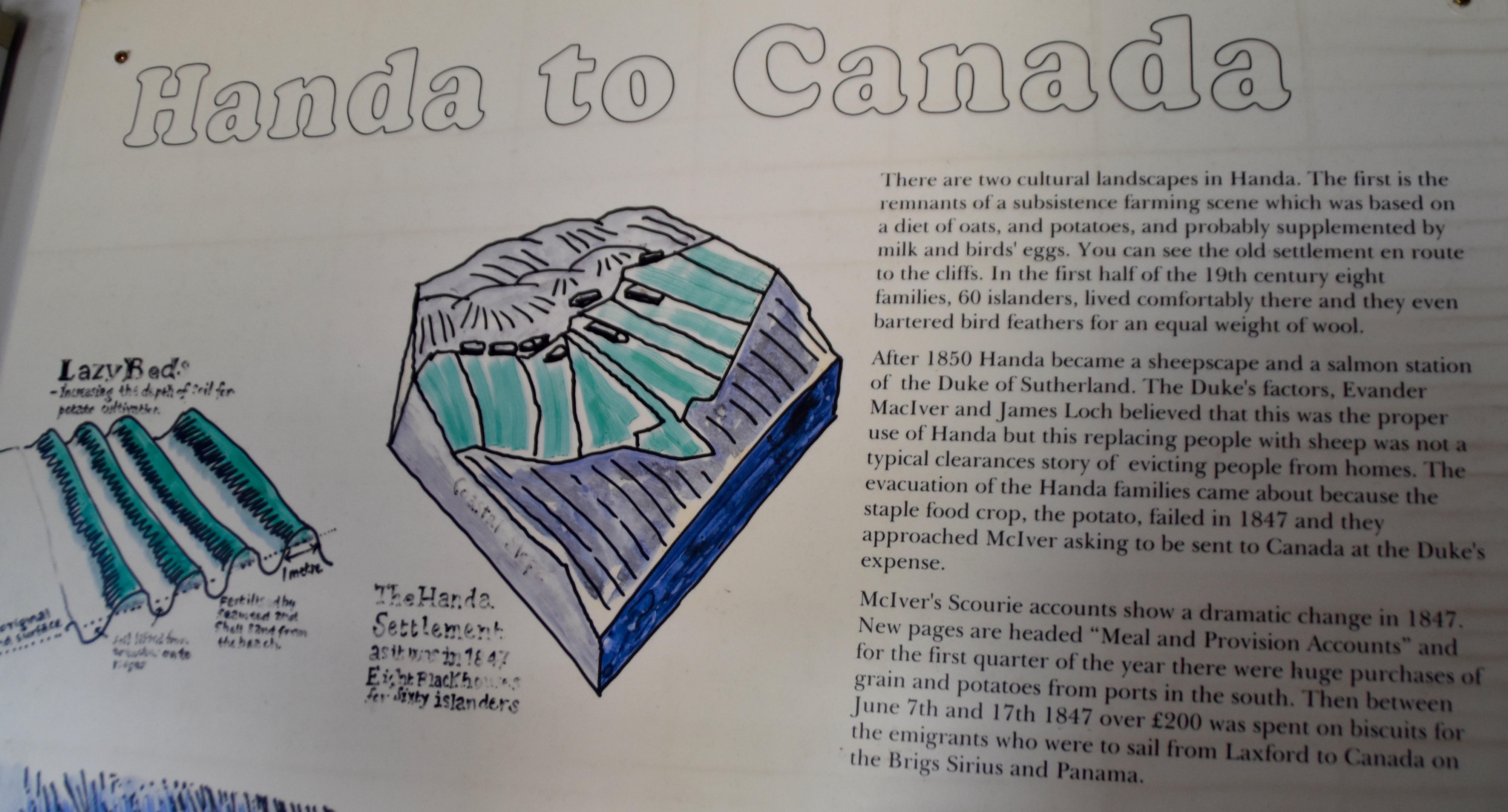
The Wikipedia entry suggests that in ancient times it was used as a burial ground as wolves had a nasty habit of digging up and eating the corpses on the mainland. It also is claimed to have its own mini Parliament and an island Queen.
What we do know for sure is that in 1841, the first truly modern census was conducted in Britain and there were 65 people from eight families living on Handa. Six years later they all left on two brigs, the Sirius and the Panama bound for Nova Scotia.
I resumed the search for more information back home in Halifax where Canada’s Museum of Immigration is located. It has access to all available information on immigration to Canada. If there’s an existing record, they have it and sure enough they did, or at least part of it.
They have a record of the Panama sailing from Loch Laxford on June 19, 1847 and arriving with 289 passengers in Montreal on August 2nd. However, in the account of this voyage in the 1973 book The Leviathan of Wealth: The Sutherland Fort in the Industrial Revolution the ship is listed as having 397 passengers and making a first stop in Pictou, Nova Scotia which was the principal port of entry for Scottish immigrants at that time. So it appears that over 100 Scots from the area where Handa is located did disembark in Nova Scotia. In 1848 the ship Ellen left Loch Laxford with 158 souls who were being shipped to Canada by the Duke of Sutherland as part of the Highland clearances. On the passenger list are members of the Kerr, Falconer and MacLeod families who all appear on the 1841 census as living on Handa. Later records show that the Falconers moved on to Prince Edward Island, but perhaps not all of them as there is a place called Falconer Grant in Pictou Country.
Back on Handa Island there is another informational panel which indicates that the immigrants (refugees really) did not receive a warm welcome.
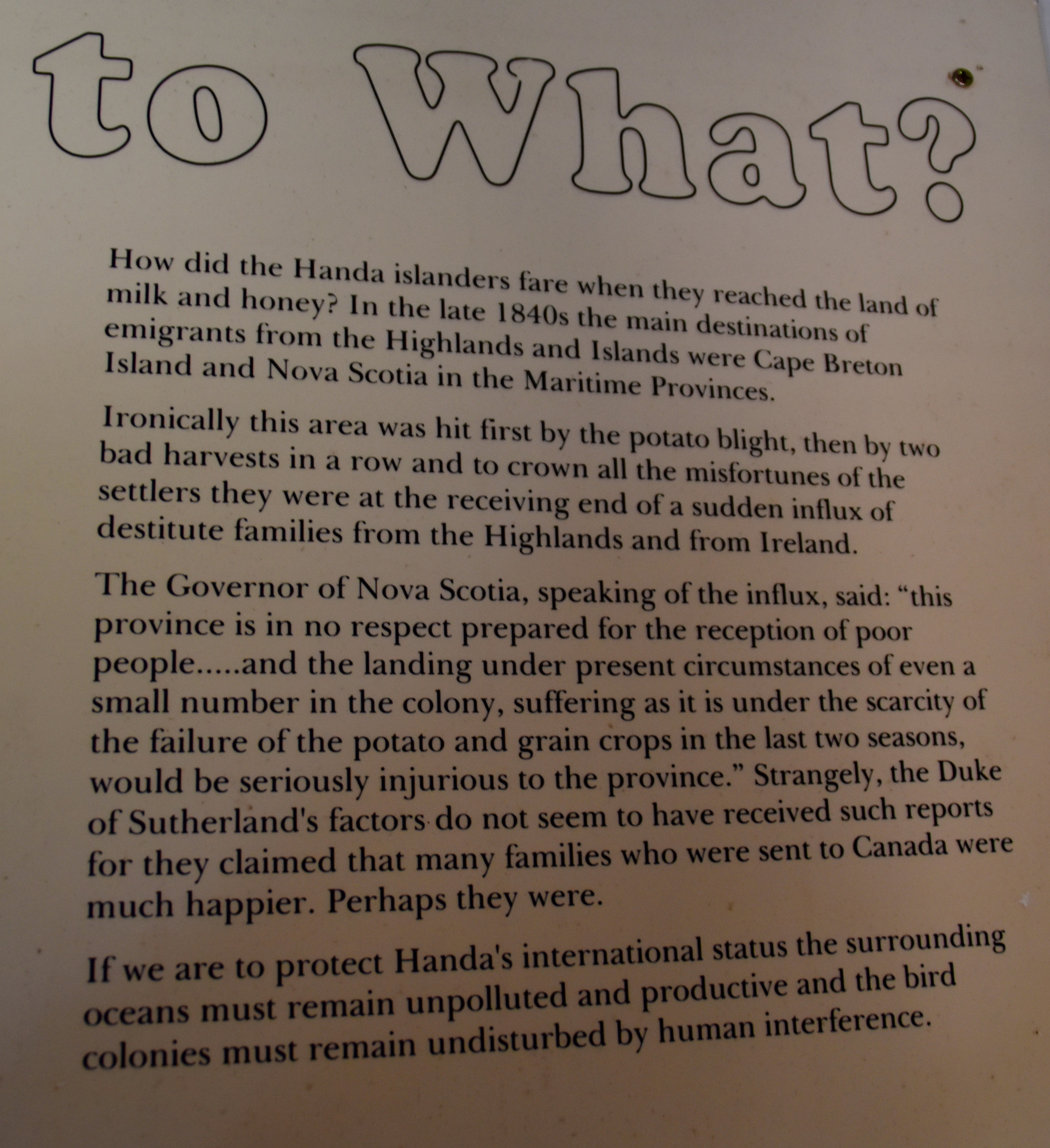
In a 1991 comprehensive article in Cape Breton’s Magazine Dr. Robert Morgan of the Beaton Institute at Cape Breton University described what is referred to as The Great Famine of 1845-51. Between 1802 and 1845 30,000 Scots emigrated to Cape Breton Island and they employed the same agricultural techniques as they had in Scotland – mostly growing potatoes. Everyone knows about the Great Famine in Ireland, but I knew nothing about it in Scotland and Nova Scotia until I went to Handa. The same potato rot that struck the Irish crops also struck the Scots and the Cape Bretoners at the same time. The famine lasted for six years and there are no records of how many people actually died of famine in Cape Breton, but many certainly did.
So the emigrants from Handa, who may have wanted to join their brethren in Cape Breton arrived at the worst possible time. Dispatches were put out by government officials warning people to stay away from the island and look to other places to settle. That might explain why some moved on to P.E.I. and others stayed in mainland Nova Scotia. Kerr and MacLeod are both common names there.
After the depopulation of Handa it was used as a place to raise sheep and the stone houses were left to gradually disintegrate over time. Today the island is privately owned, but is managed by the Scottish Wildlife Trust which uses volunteers to maintain it and assist visitors to the island that now come primarily for the seabirds and the wild scenery. Few even know that it was once a thriving community for hundreds of years.
Getting There
The closest town to Handa is Scourie which is a hiking and fishing centre on the west coast. We stayed at the Scourie Hotel which is right in the middle of the town, village really, and has a long history of hosting fly fishermen. It is comfortable, has very good food and a great atmosphere.
From Scourie its a short drive north on to the A894 and then a left turn toward Tarbet with the road ending at the parking lot for the boat service to Handa three miles later. Here is the link to the boat service that will transfer you to Handa and back. They don’t take reservations and are weather dependent. The fare is £15 round trip. The first service starts around 9:00 AM each day and the last pick up is at 5:00 PM. My advice is just to be there by say 8:45 and hopefully you’ll get on the first boat over.
This is the ticket office.
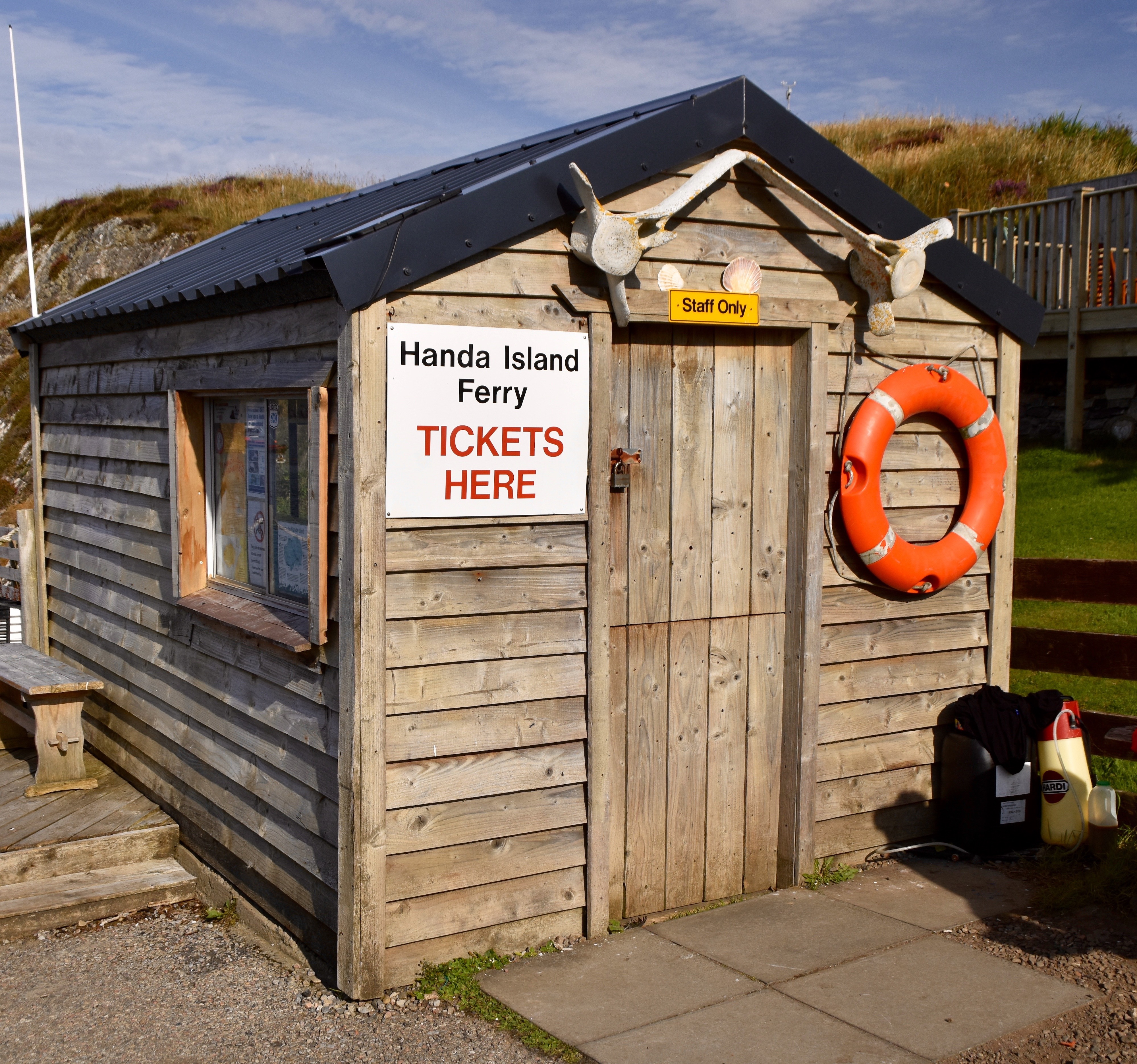
Behind it these lobster pots were stacked, reminding us of another something Scotland and Nova Scotia have in common.
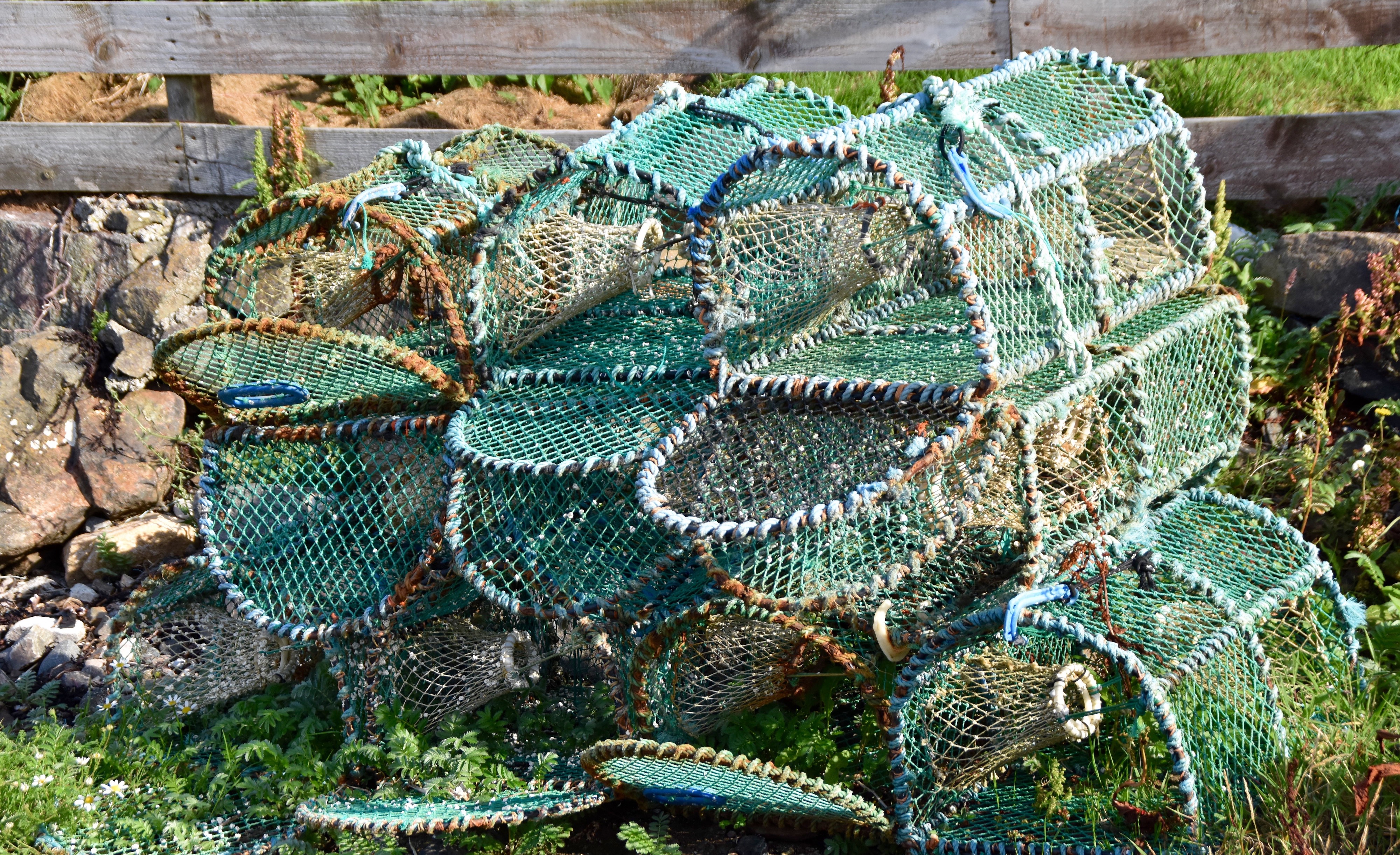
It almost looked like someone had deliberately place this anchor on the nearby beach to create a great photographic scene.
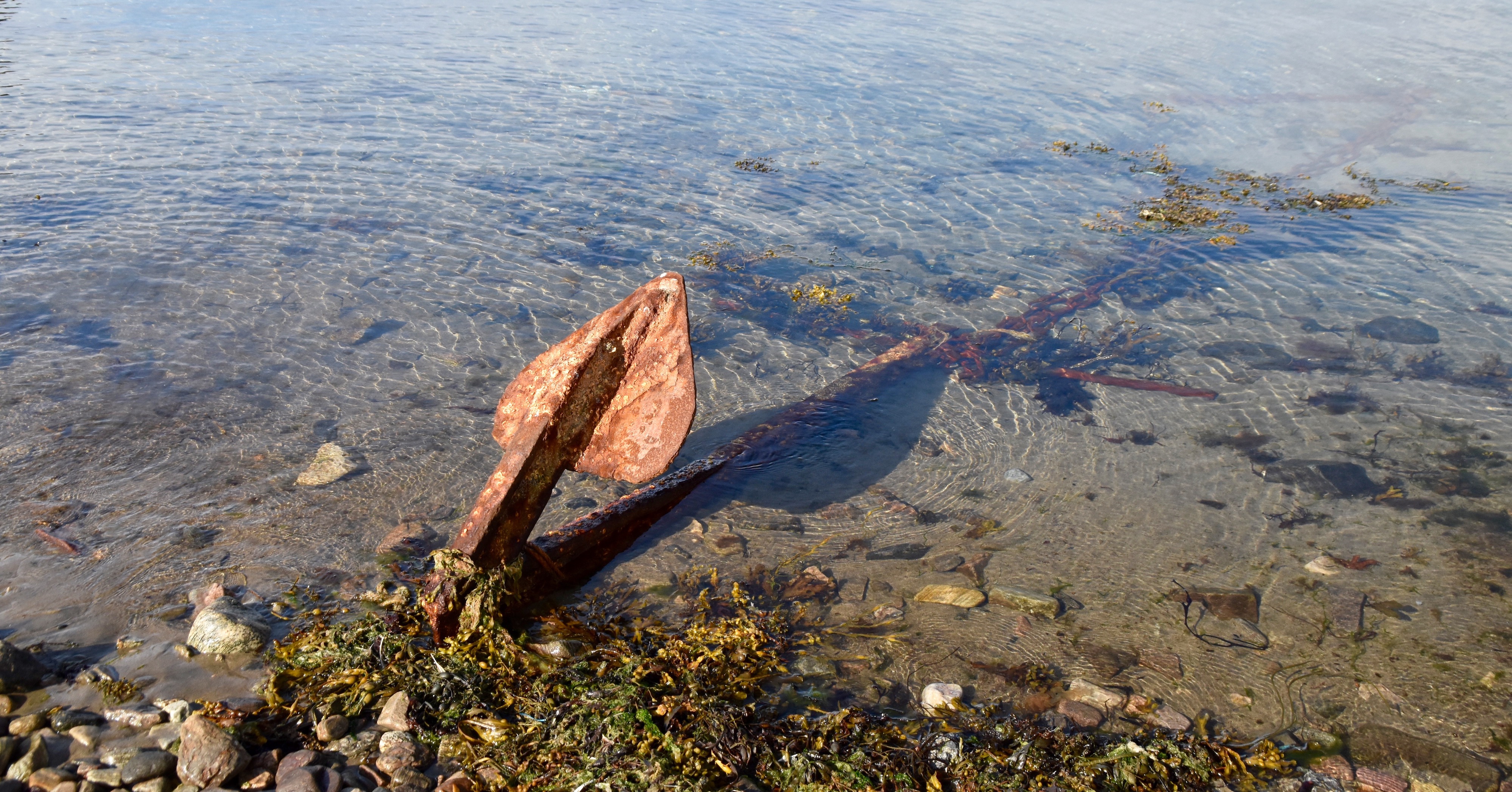
When we got to the parking lot there was one other couple already waiting and not long after Roger the ferryman showed up. While he was selling us the tickets his assistant rowed out to get the large zodiac which is used to ferry people and supplies back and forth to Handa.
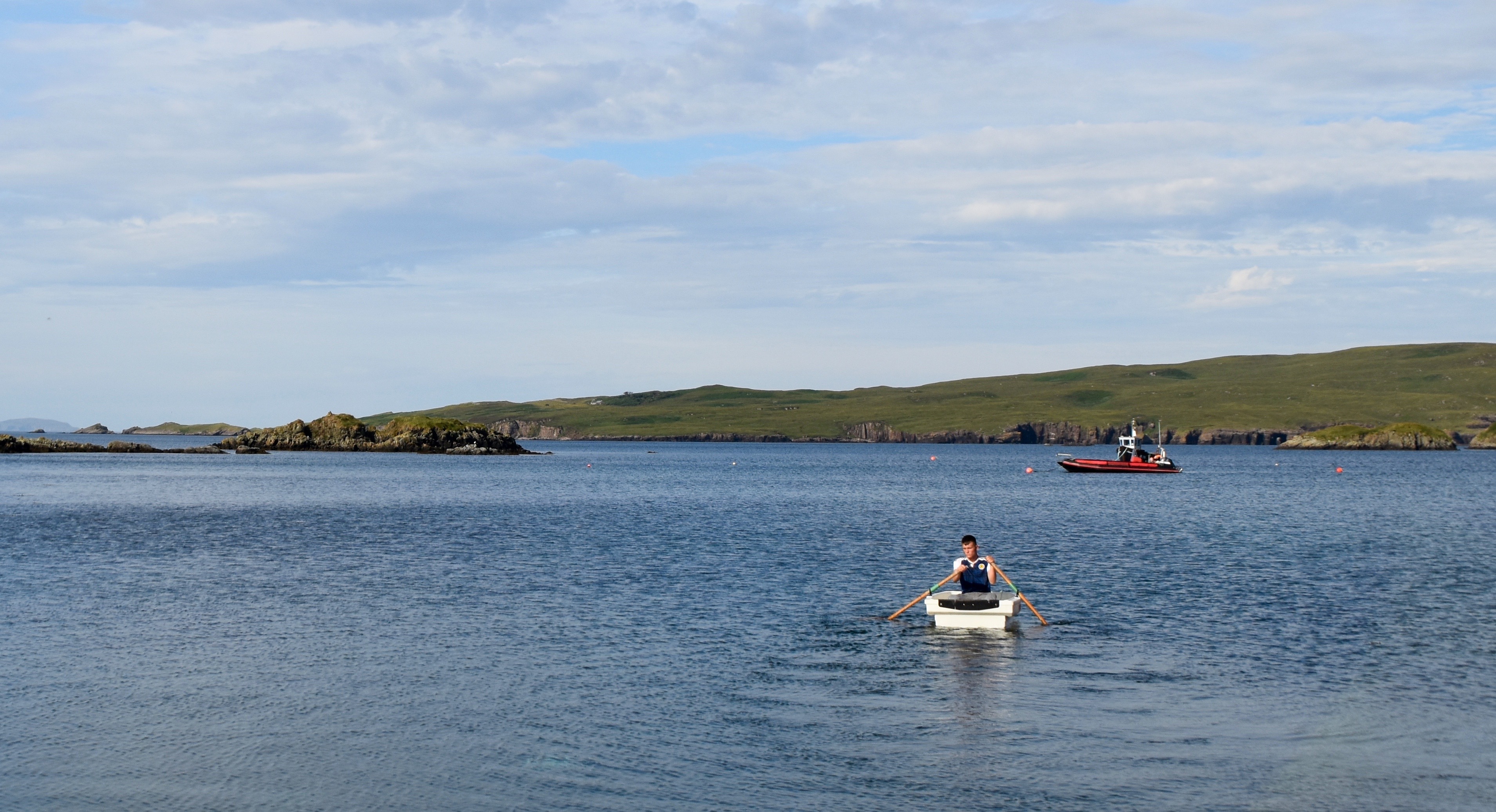
Once the boat was tied up at the jetty we were outfitted with PFDs and headed for the boat. You must take everything you need for the day with you as there are absolutely no services on Handa. Luckily for us it was an unusually warm and sunny day in western Scotland and we would get to see the island at its best.
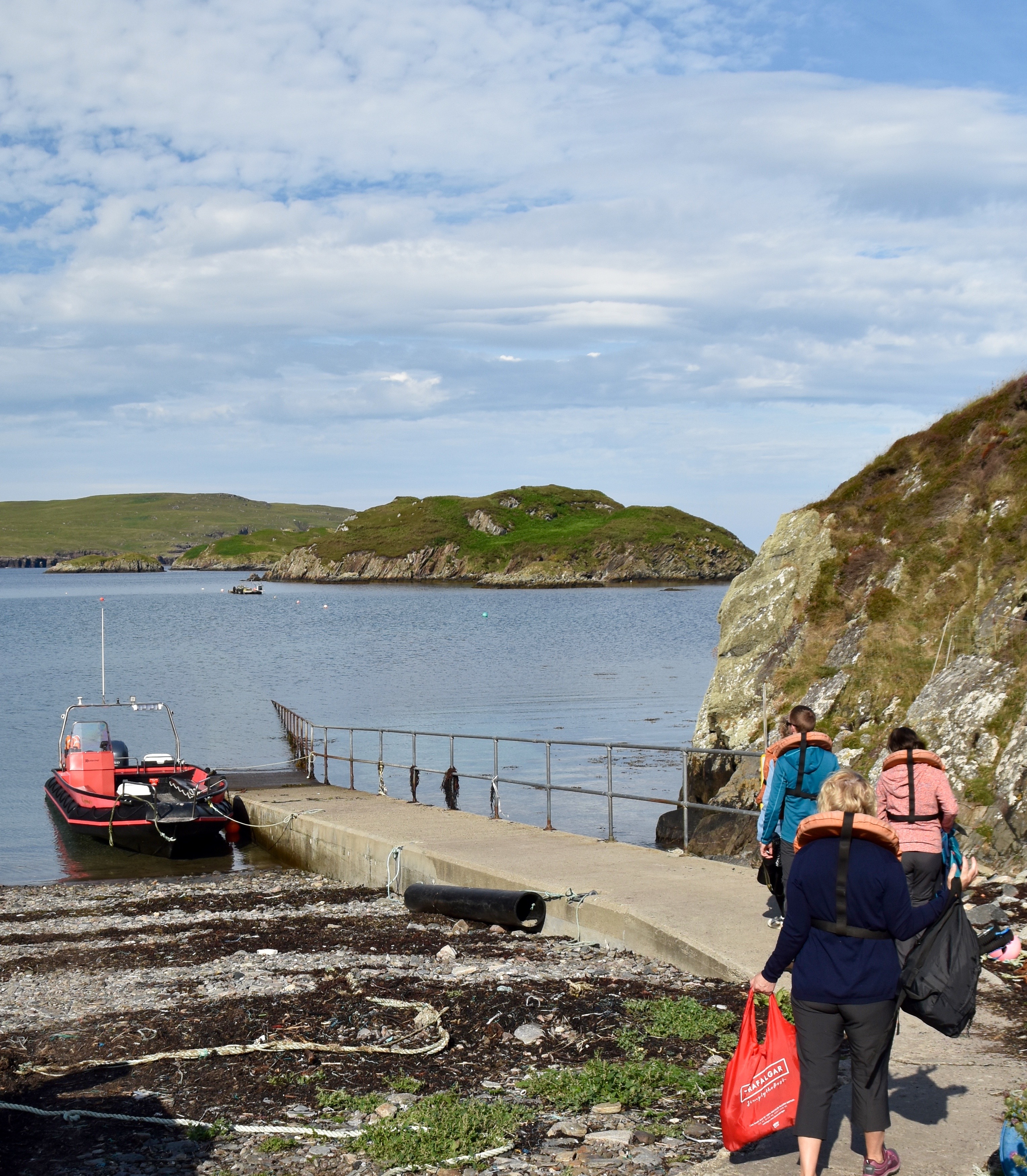
From this photo you can see that Handa lies only a short distance from the mainland and the trip takes only about ten minutes, if that.
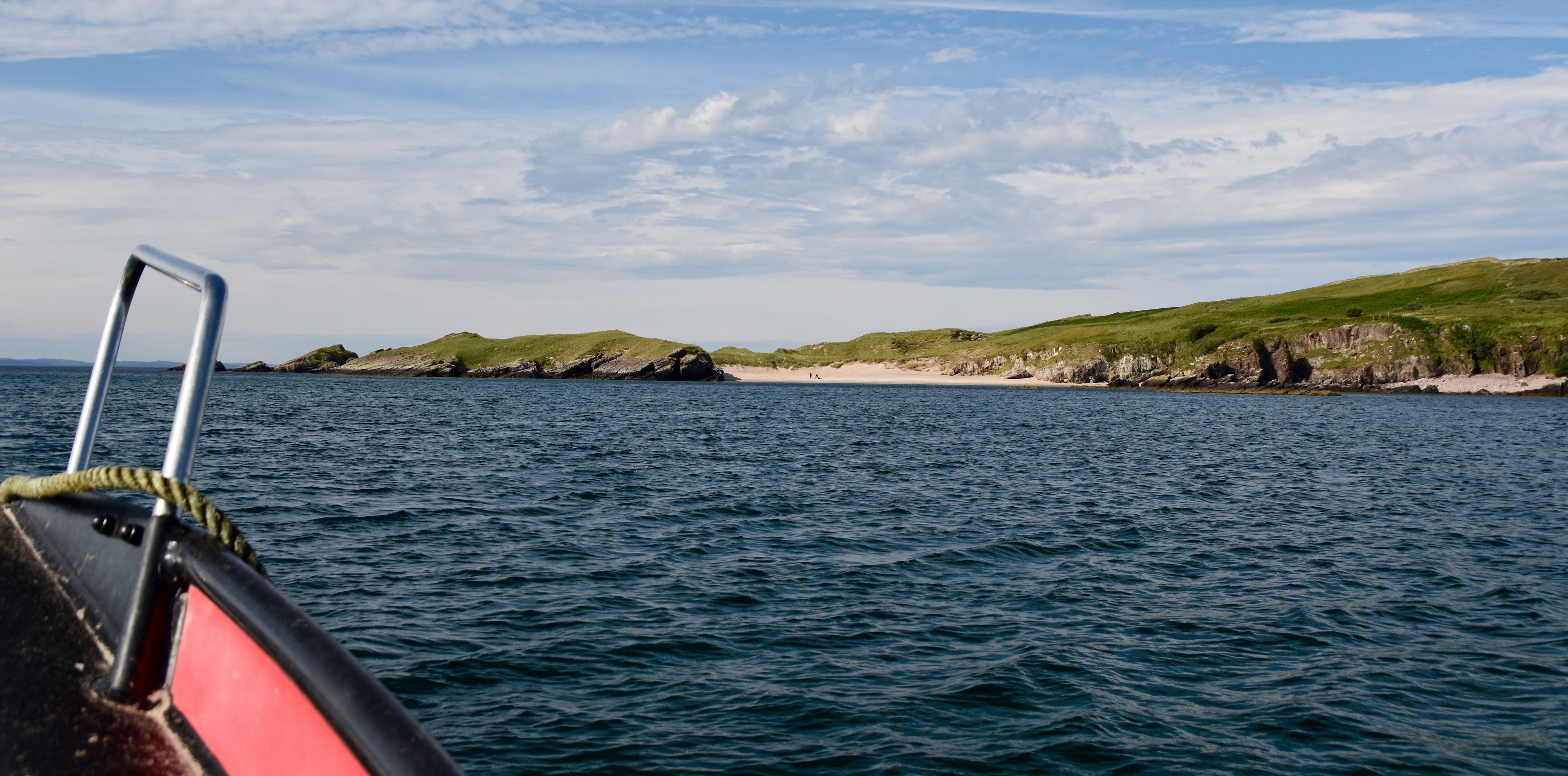
Waiting for your arrival are two of the summer volunteers who help pull the zodiac up onto the beach and help us get off.
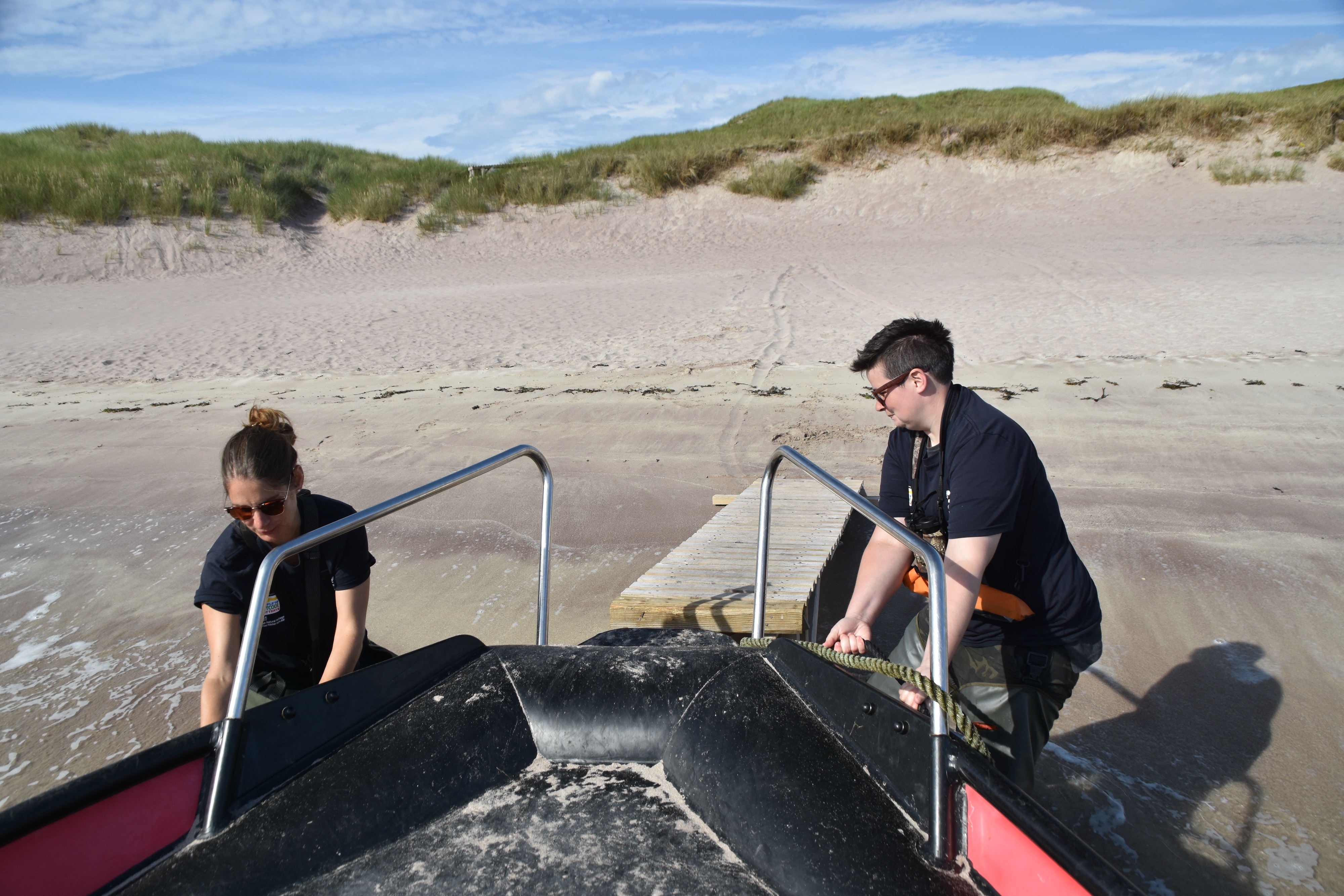
We are then given a brief run down of the rules which essentially are to stick to the path that encircles the island and not disturb the nesting birds. Not getting too close to the edges of the cliffs does not need to be spelled out. From there we are shown the way to the small museum and the start of the path.
Here is a map of Handa that has been prepared by the Scottish Wildlife Trust. The public pathway is shown in green and is about 4 miles (6kms.) in length although frankly it seemed longer. Much of it, particularly the last third is boardwalk, while the rest is easy walking on mossy ground with the occasional stone to trip over. I recommend good hiking boots and a walking stick. Binoculars and a telephoto lens will give you the best view of the nesting seabirds.
We spent about three hours making the circuit of Handa which included many stops for photos and bird watching.
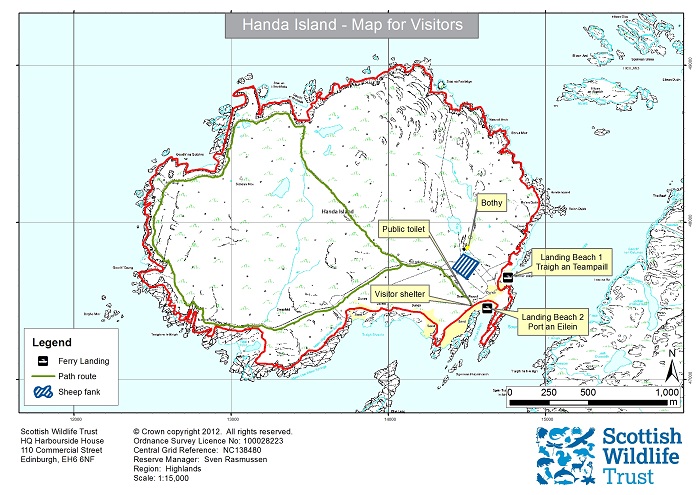
This is the small visitor’s shelter within which are contained the two information panels where I gleaned information about the islander’s leaving for Nova Scotia. That’s the vertebrae of a whale by the door.
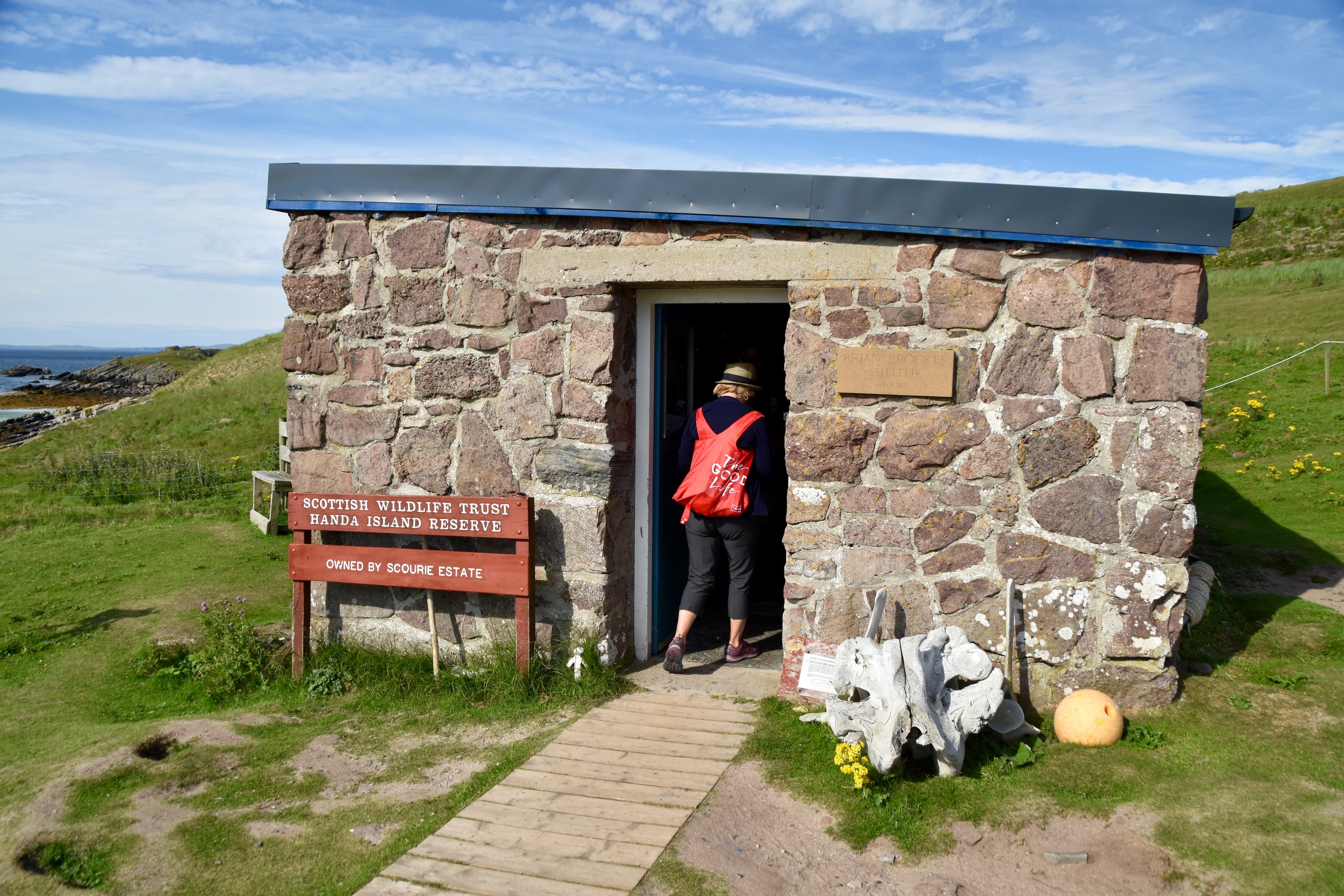
Also inside is this small collection of items found washed up on Handa’s shorelines.
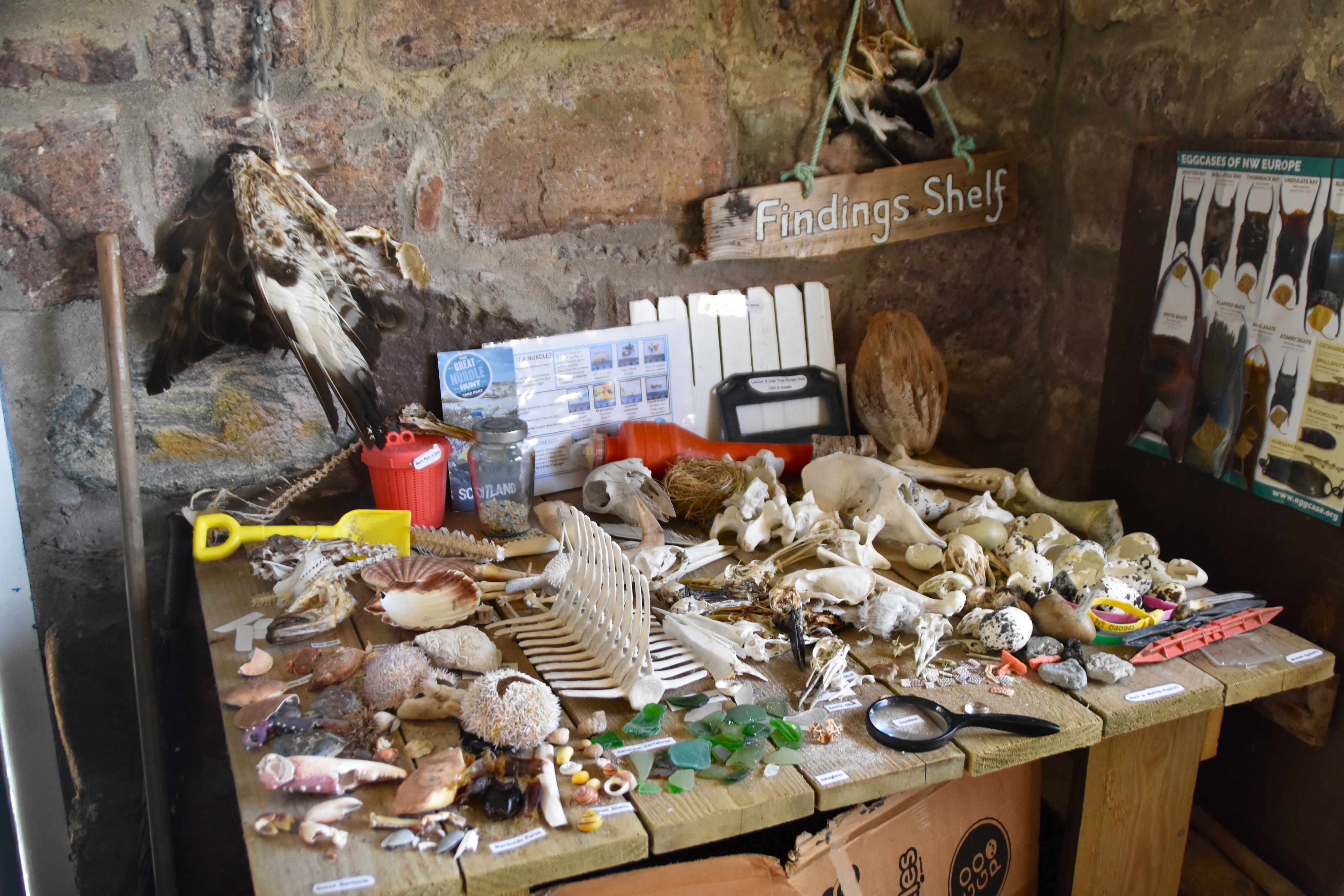
Nearby the shelter is the old graveyard which is roped off, overgrown and the grave markers in very poor shape.
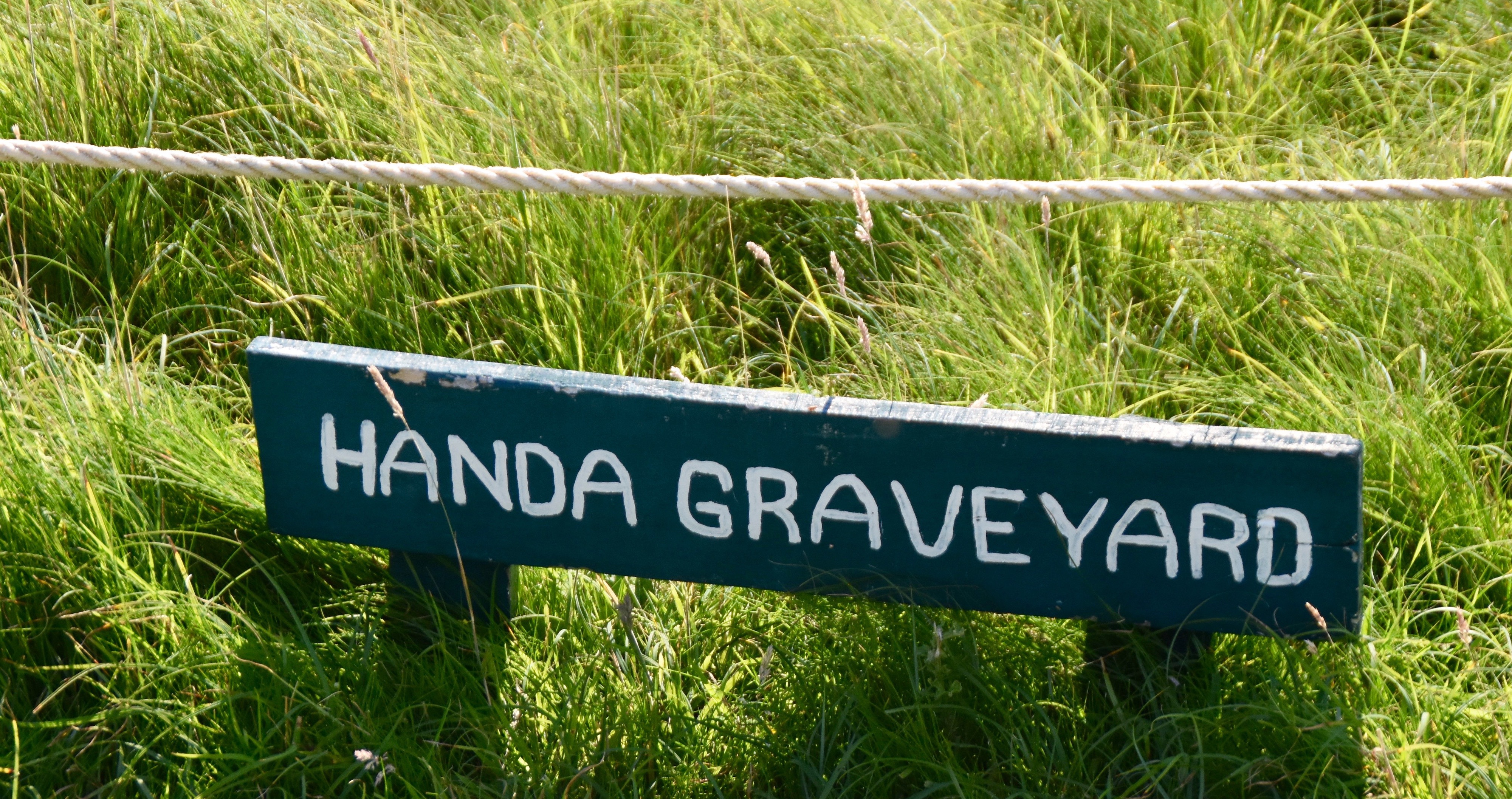
Also nearby is a large rectangular stone enclosure which was once used as a sheep fank, a Scottish term for a sheep pen and past that the cottage or bothy as the Scots call them, where the volunteers stay when not on duty.
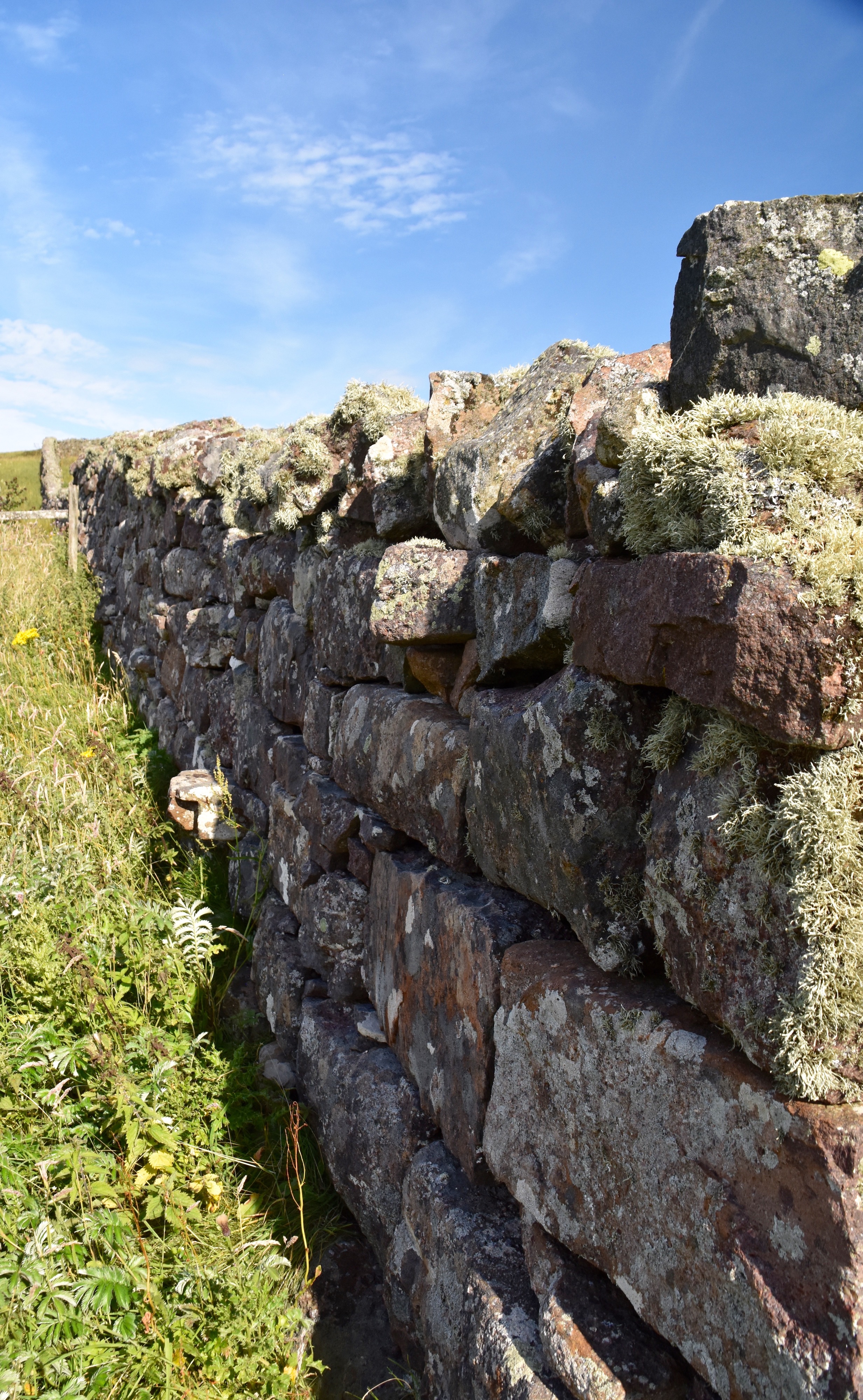
Almost right off the bat I got a life lister for me, a great skua which is one of the most aggressive birds in the world. They prey upon the other birds that breed here by eating their eggs, their chicks and attacking them in mid-air to make them cough up the contents of their stomachs which they then snatch for themselves. They’ll even kill an adult puffin. It’s easy to personify them as ‘evil birds’ because of their vicious habits, but they are just occupying an ecological niche that without them would lead to overpopulation, disease and starvation for the rest of the birds breeding on Handa. They really do ensure ‘survival of the fittest’.
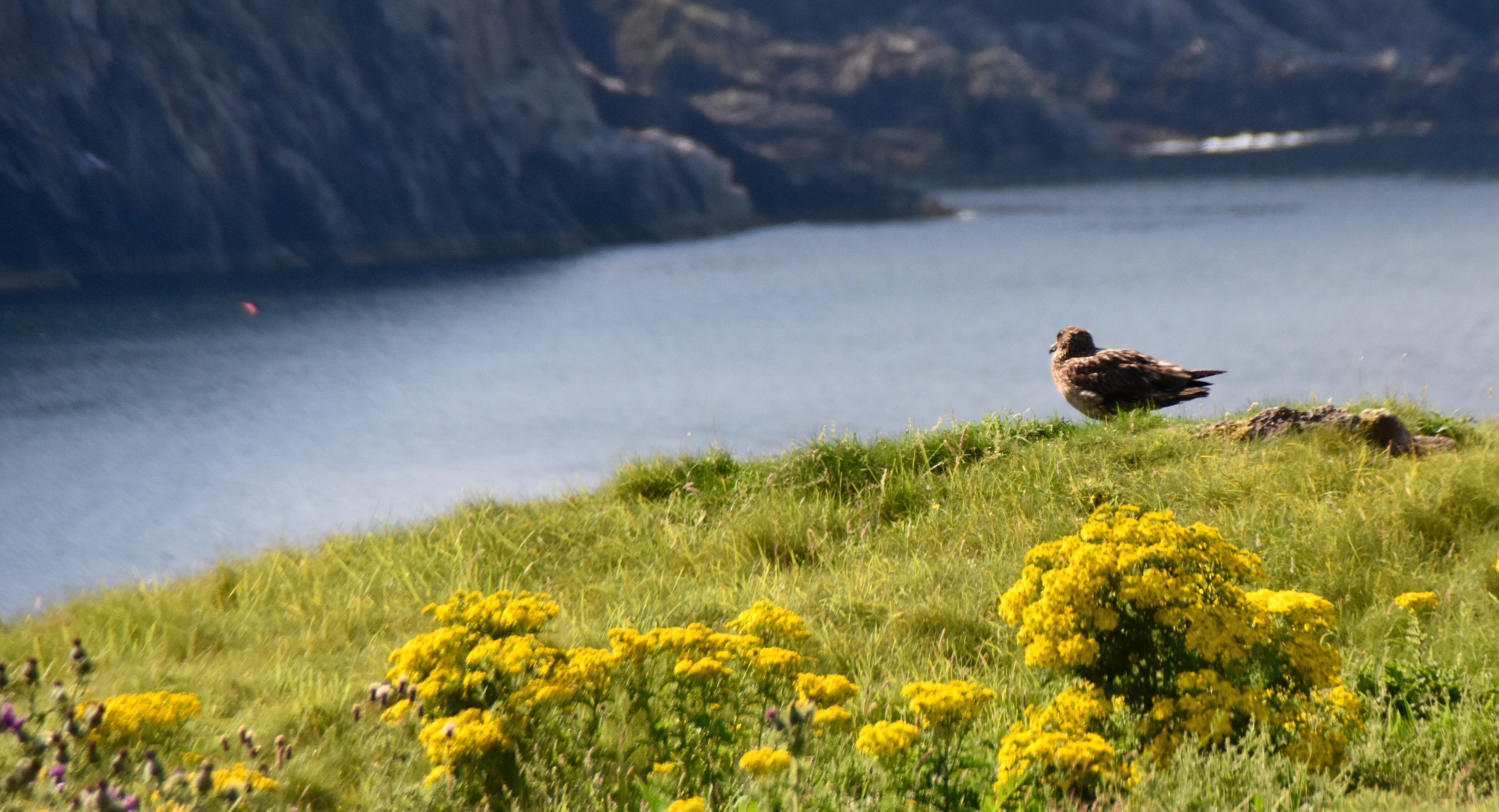
Unlike most of the other breeding birds on Handa who stick to the cliffs, the skuas breed on the open grasslands of Handa among the heather, ferns and wildflowers that make the landscape here so beautiful, even without the breathtaking water views. They fear nothing including humans and in a couple of cases where the pathway came fairly close to a skua nest they would dive bomb close enough to our heads that we had to wave the walking sticks to make them cease and desist while we moved on as quickly as possible. We made no attempt to actually hit them, but employed the sticks strictly for defensive purposes.
This is a female arctic skua, for some reason called a parasitic jaeger in North America, which is the other species of skua that breeds on Handa.
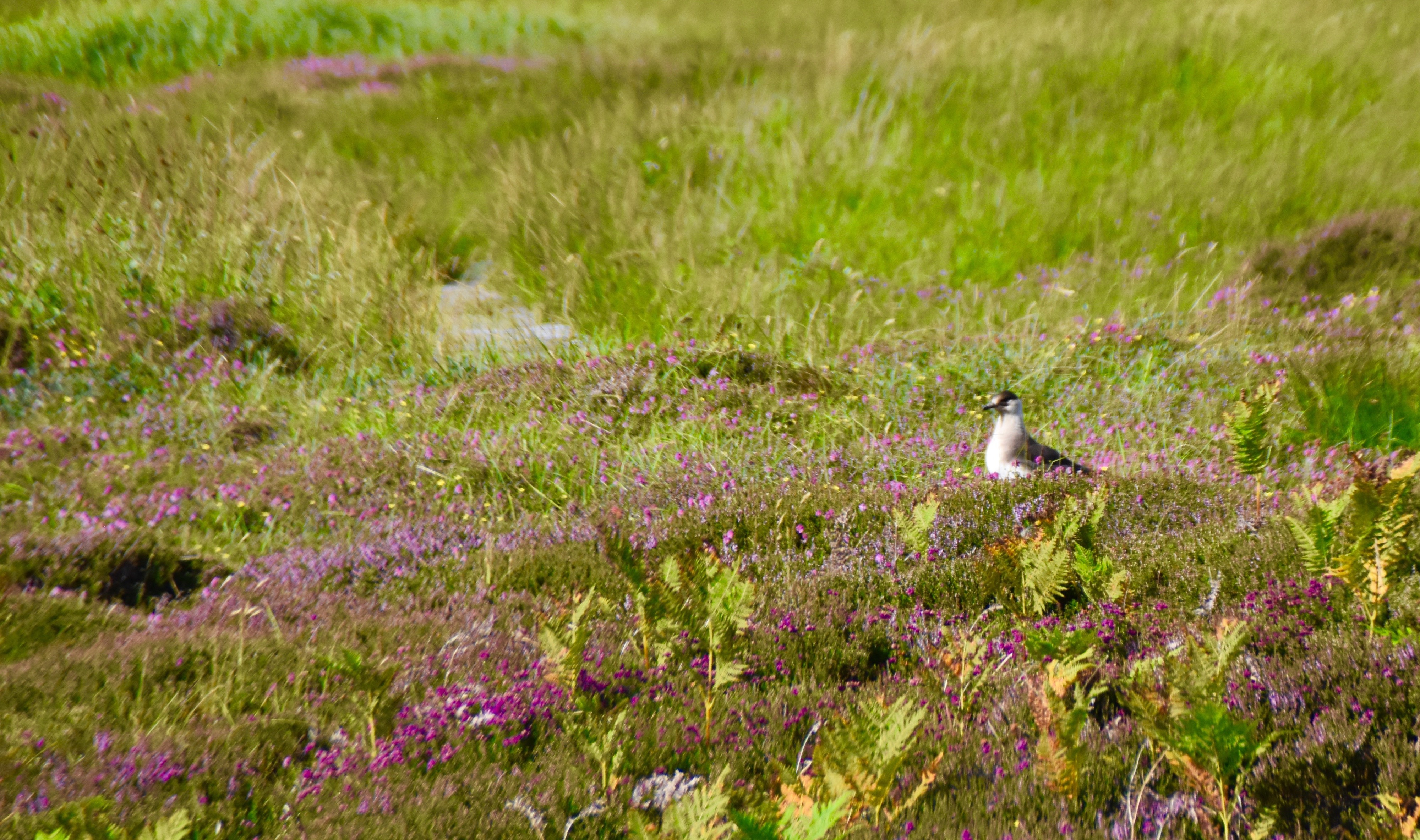
As we headed inland toward the remains of the dwellings of the Handa islanders I looked back and took this wide angle shot which, to me, captures the raw beauty of the island. And we haven’t even reached the cliffs yet!
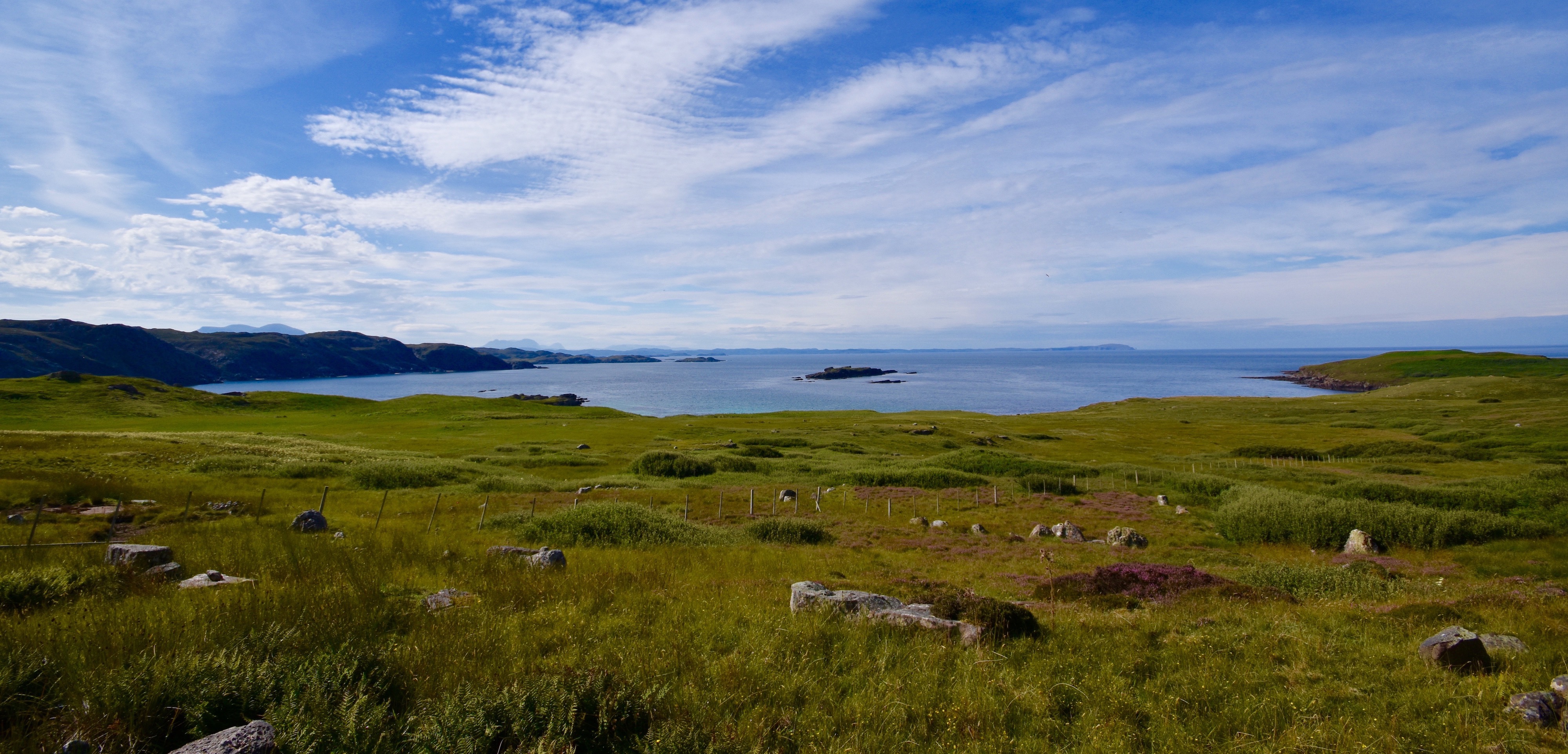
These photos show all that remains of some of the cottages that once housed generations of Handa islanders. Their footprints are incredibly small considering that each family usually had at least half a dozen, if not more children. But back then, infant and child mortality was extensive and probably even more so than usual in a place as remote as Handa.

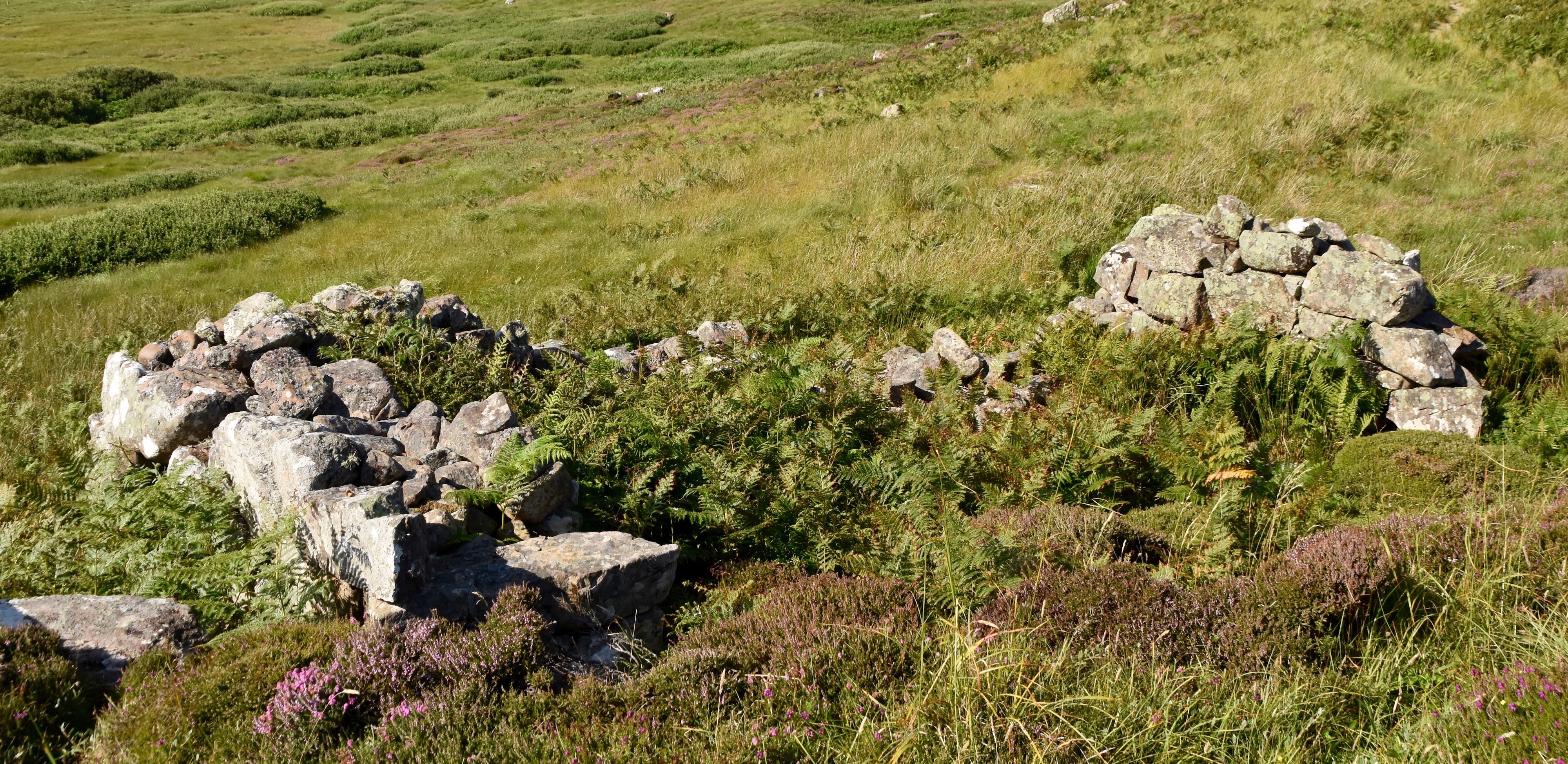
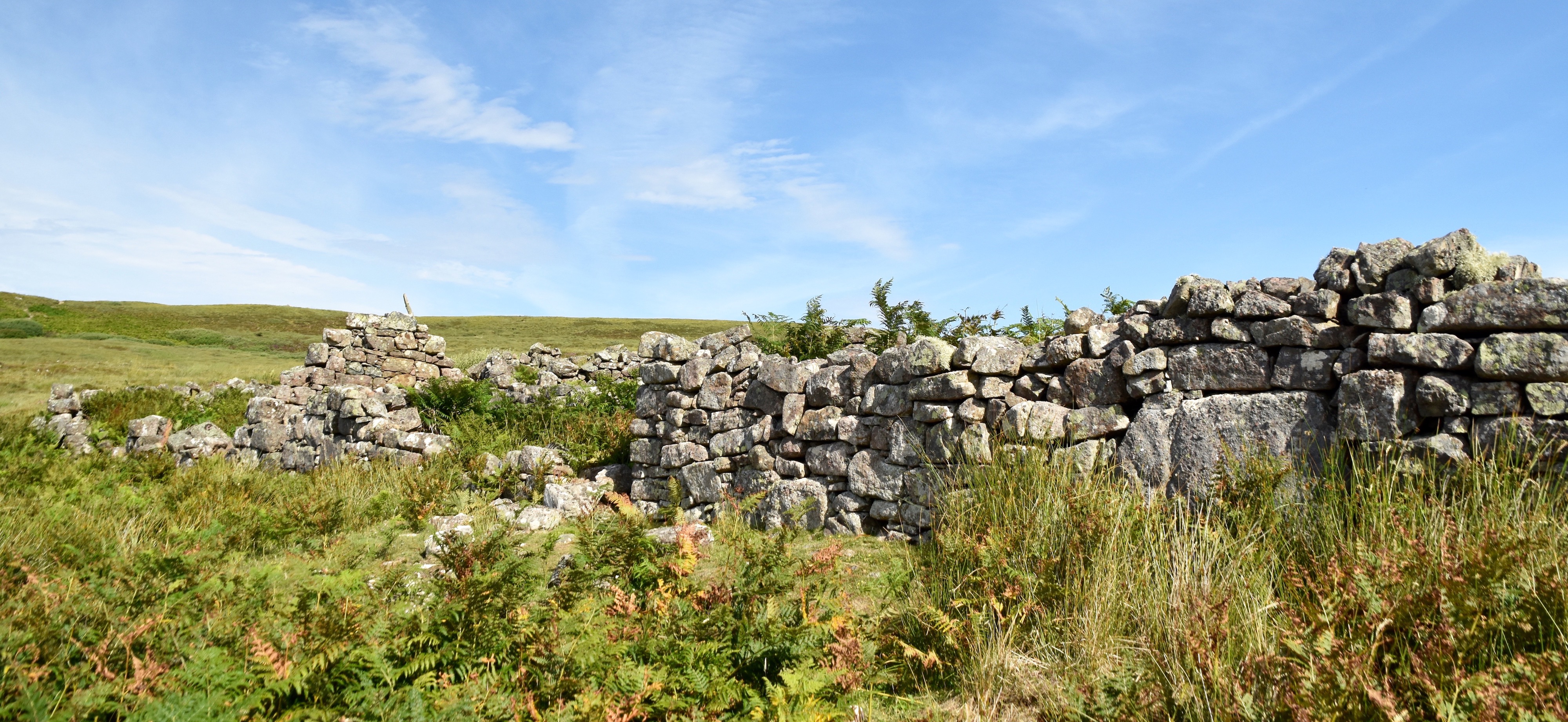
Sometimes when I stumble across old ruins like this, which is actually not uncommon in parts of Nova Scotia, I get sappy thinking about the hopes and aspirations of the people who built these places and how they crumbled and died. But not on Handa. No matter what the conditions they encountered upon arriving in Nova Scotia, I have to think their descendants are better off today than they would have been if they had not left.
About a mile past the old foundations you complete the crossing of Handa and come to the cliffs and the seabird colonies. For the next couple of miles you will be walking along one of the most spectacular footpaths in all of Britain if not the world.
The first thing we noticed at Puffin Bay where you first reach the edge of the cliffs was not the birds, but this guy perched perilously close to the edge with a spotting scope which he was using to do a tally of the nesting birds.
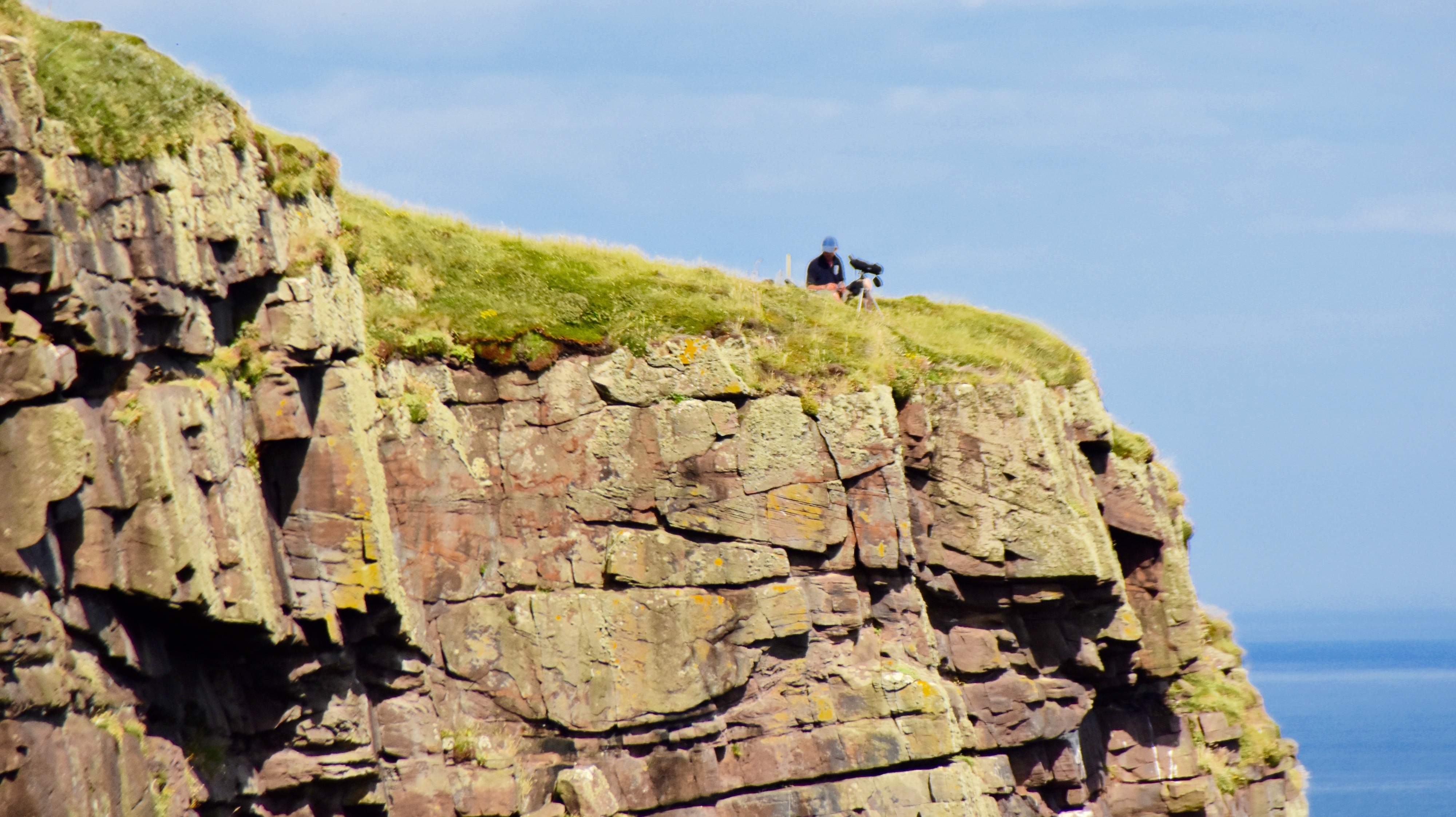
And here is a short video of the seabird colony at Puffin Bay. The one breeding bird we didn’t see were puffins, although possibly if I’d edged closer to the cliff edge I might have spotted them.
This amazing sea stack was the first of a number we saw on Handa. It is not the Great Stack of Handa, which is coming up, but it’s one of the most slender I’ve ever seen and to me, just as dramatic as the other stacks.
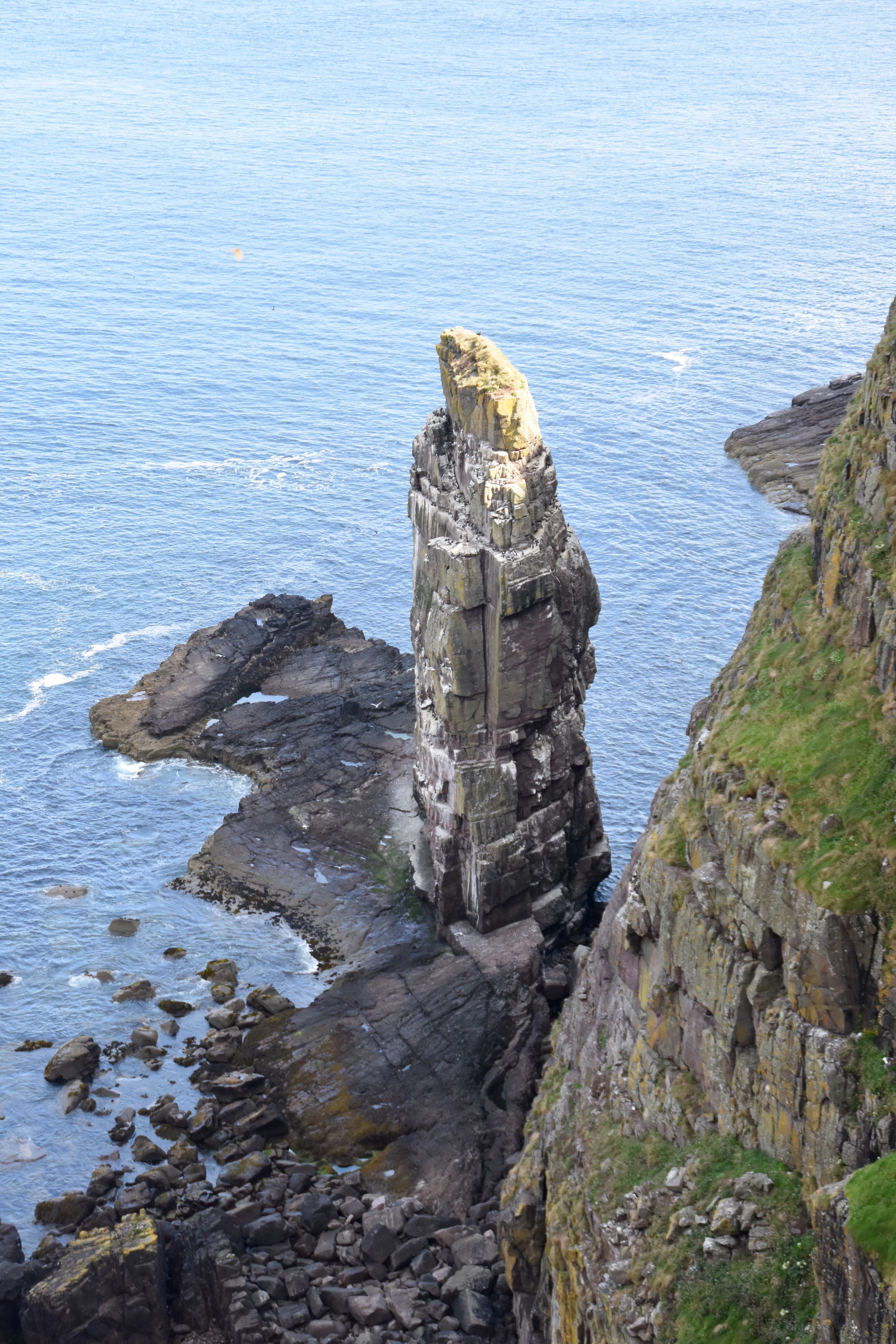
This photo gives you an idea of just how high the cliffs of Handa are. The sea stack in the previous photo looks quite miniscule when compared to the height of the cliffs beside it. The highest cliffs are about 100 metres (328 feet) or as high as a 32 story building.
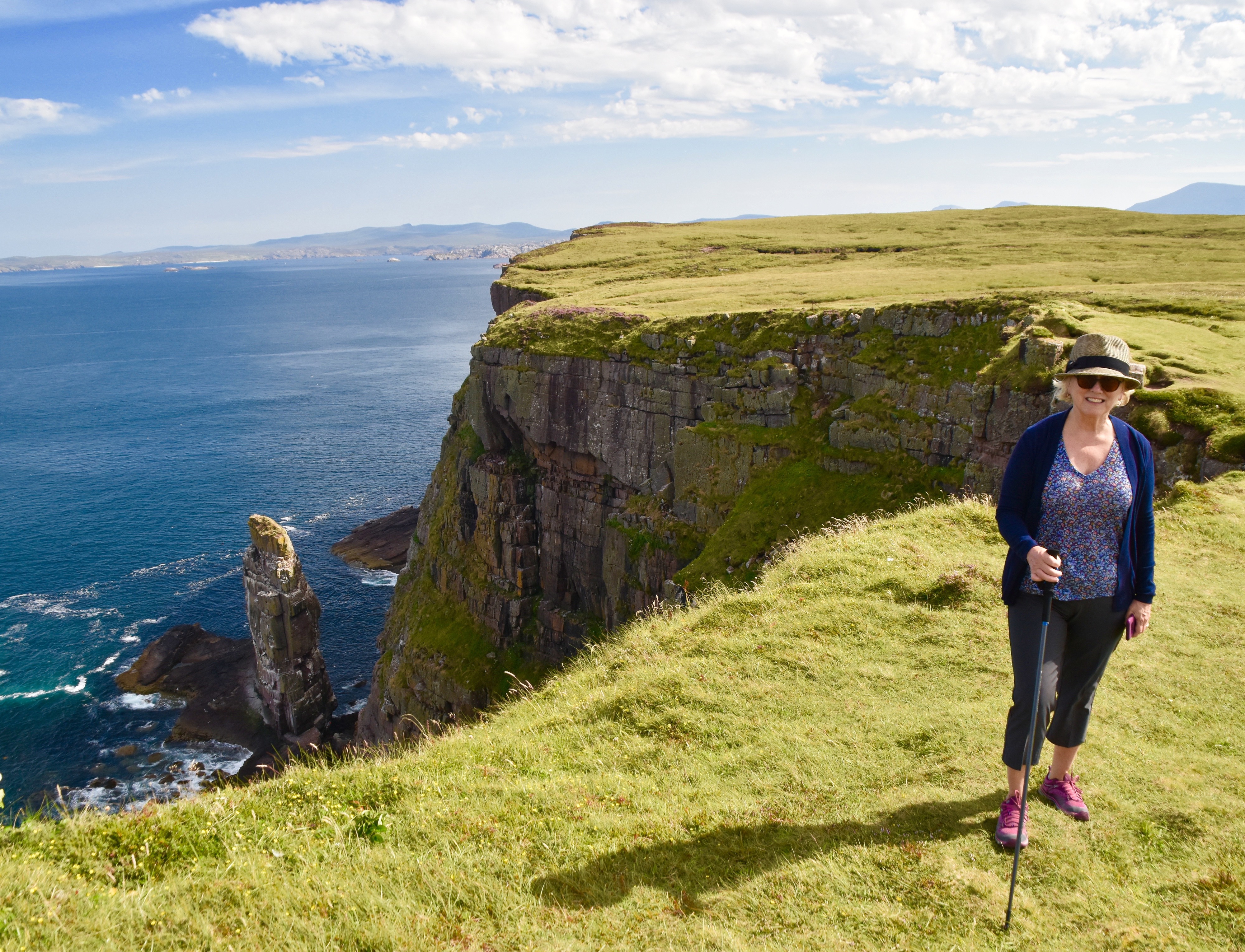
We came across of number of broken murre eggs like this one that no doubt was plucked from the cliffs below by a skua and taken up top to dine on the contents at leisure. The consumption of murre eggs is not limited to avian predators. In the Canadian province of Newfoundland & Labrador, consumption of murre eggs, or turres as the Newfoundlanders call them, was so important to the population that the right to continue harvesting them was included in the articles of confederation when they joined Canada in 1949.
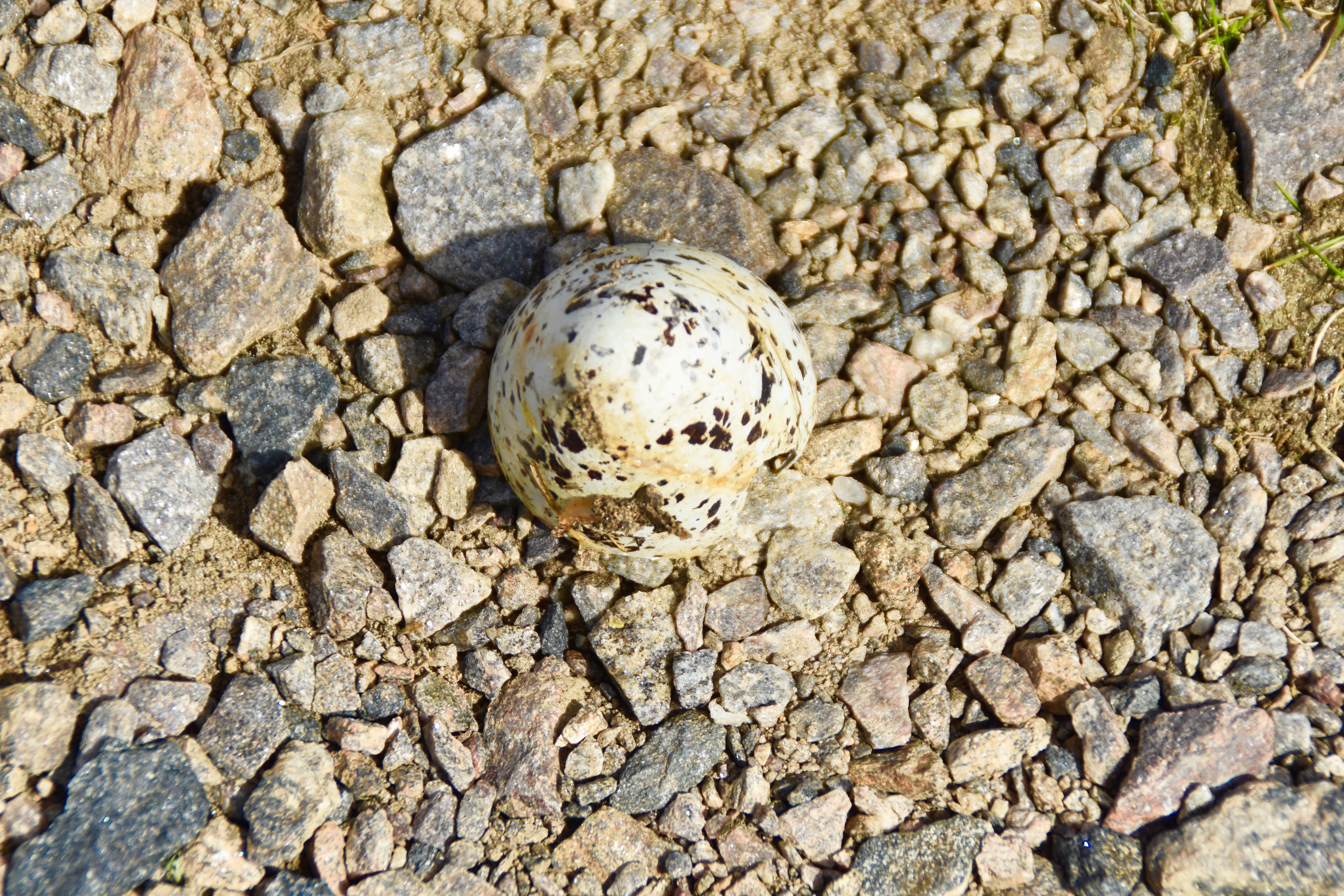
This is the view looking north from Handa to the Scottish west coast.

Here is a closer look at the shelves the seabirds like to use for their nests. It explains why their eggs have evolved to be larger at on end than the other so that if they starting rolling it will be in a tiny circle and not right off the cliff. The birds up top are murres with kittiwakes and a few guillemots down below.
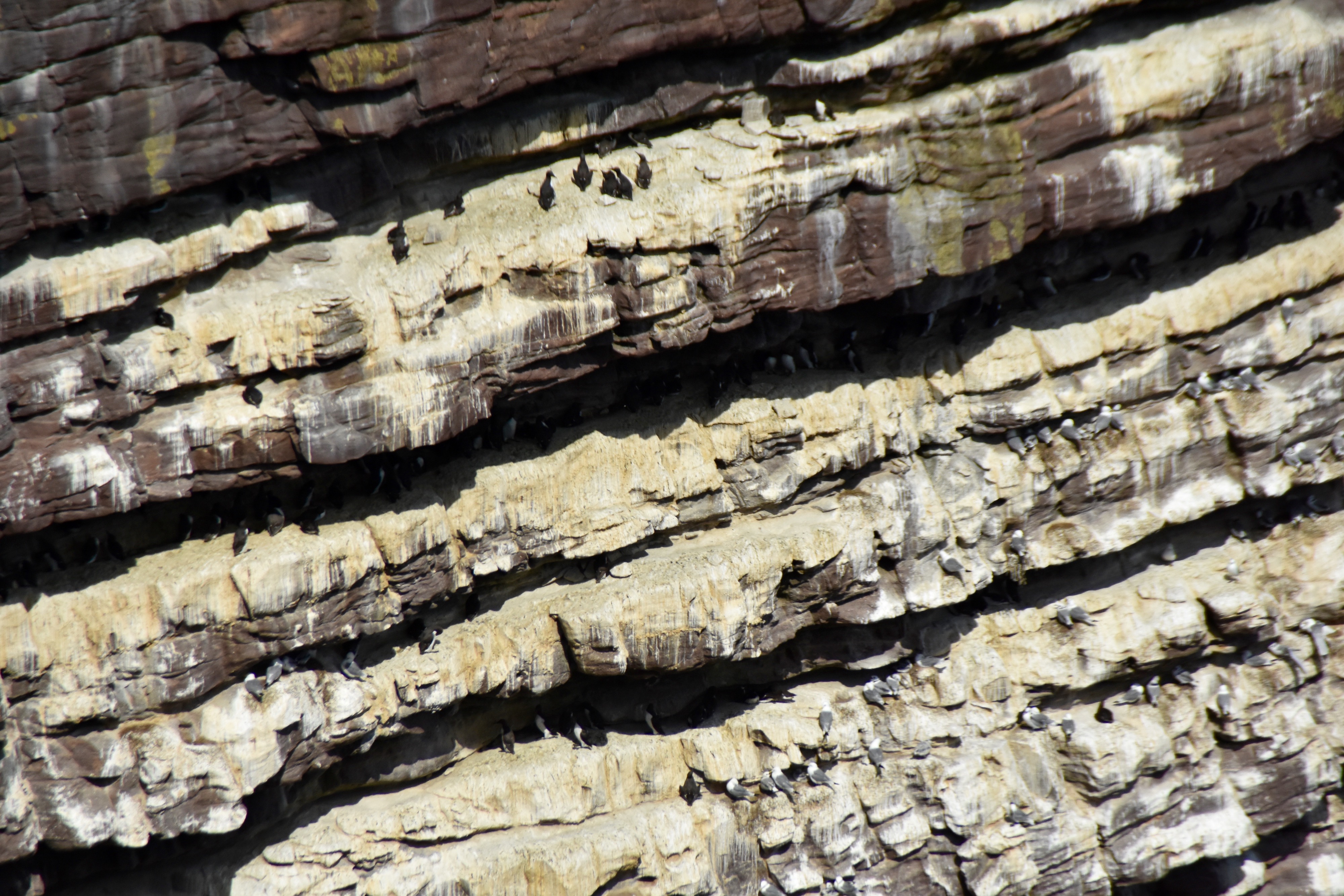
This is a close up of a nesting fulmar which like to get as far inside a crevice as possible. The greyish lump to the right of the white spot is the chick.
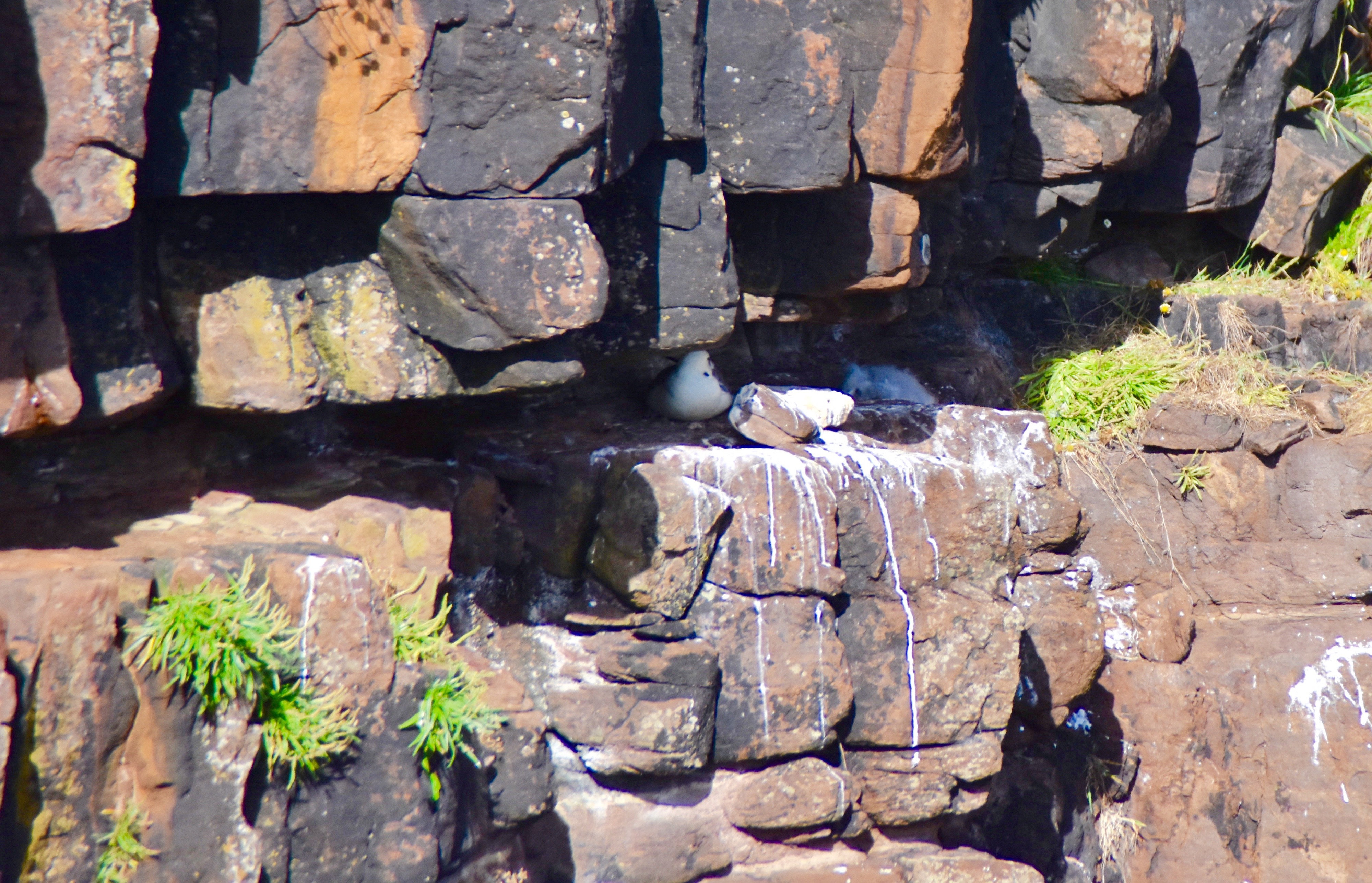
This is the Great Stack of Handa which is one of the most formidable objects to rock climbers on earth. It was not climbed until 1969, the same year we landed on the moon and since then more people have been to the moon than have successfully scaled the Great Stack of Handa.
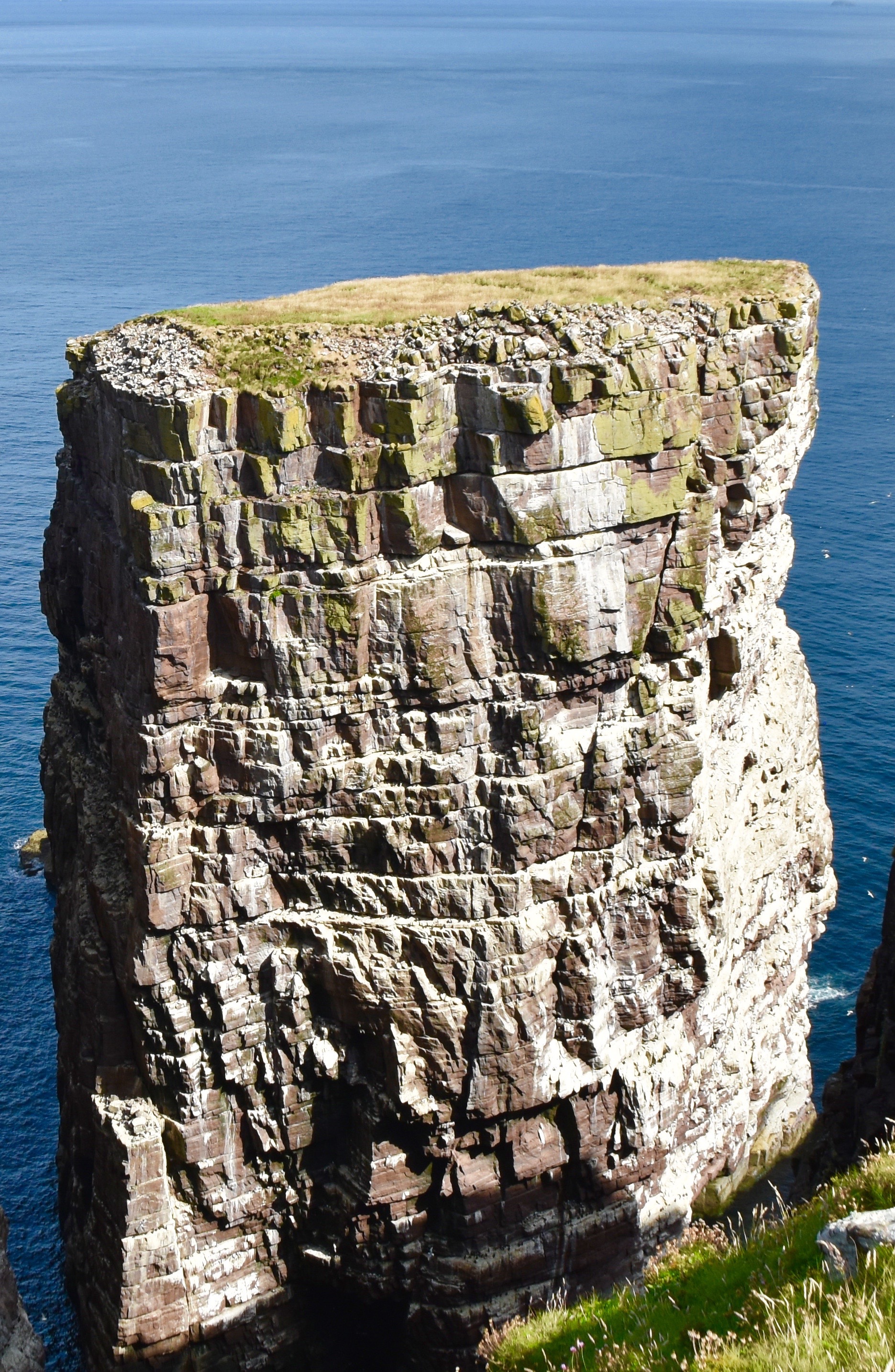
We came across this sign a couple of times and it immediately made me think of the stupidity of Brexit.
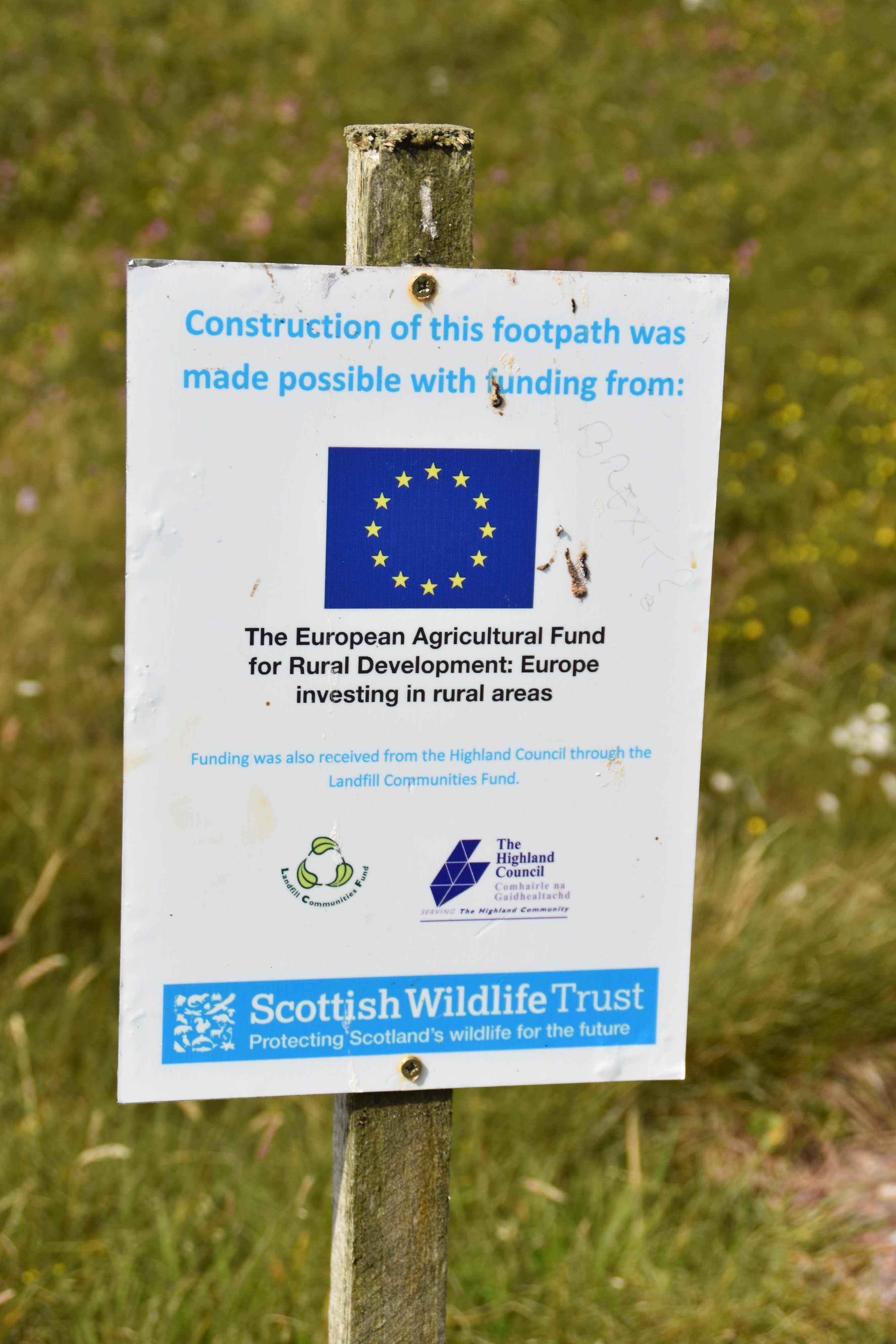
This thinking was confirmed when we came across this man from, if I remember correctly Glasgow, who comes to Handa every summer to help maintain the pathway around the island. He too was amazed at the stupidity of Brexit and the loss of EU funds for public projects like this. He had no idea where the money would come from if Brexit actually comes about.
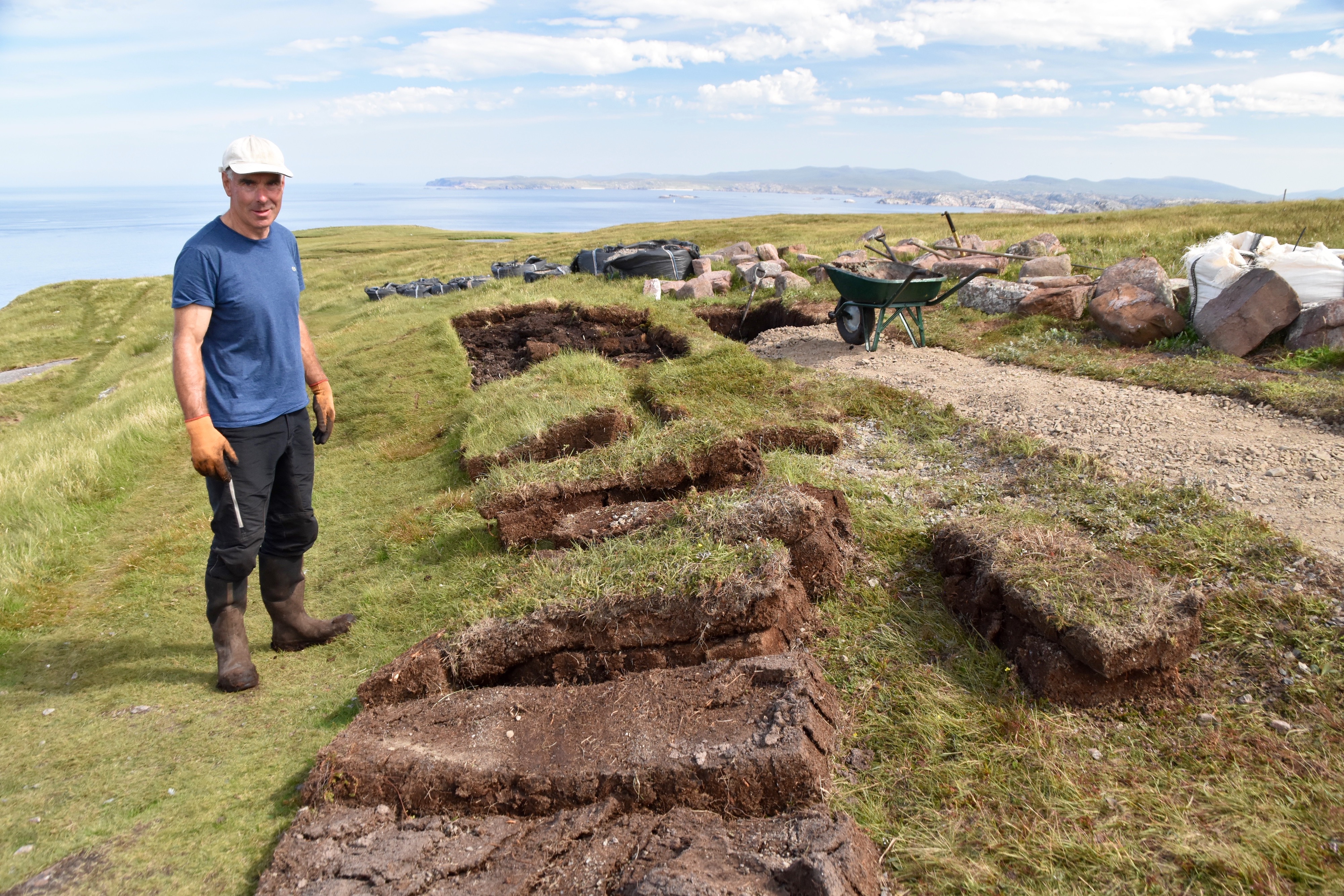
Irony alert! I am writing this post on the very day Theresa May has announced her resignation over the failure to get Brexit approved by the House of Commons.
Crossing around to the west side of the island there are more spectacular murre colonies.
This is the last of the cliffs on Handa and from here the trail leads steadily downward until you are almost back to sea level. However, the scenery doesn’t let up as there are now a series of beautiful deserted sand beaches that offer great beach combing opportunities.
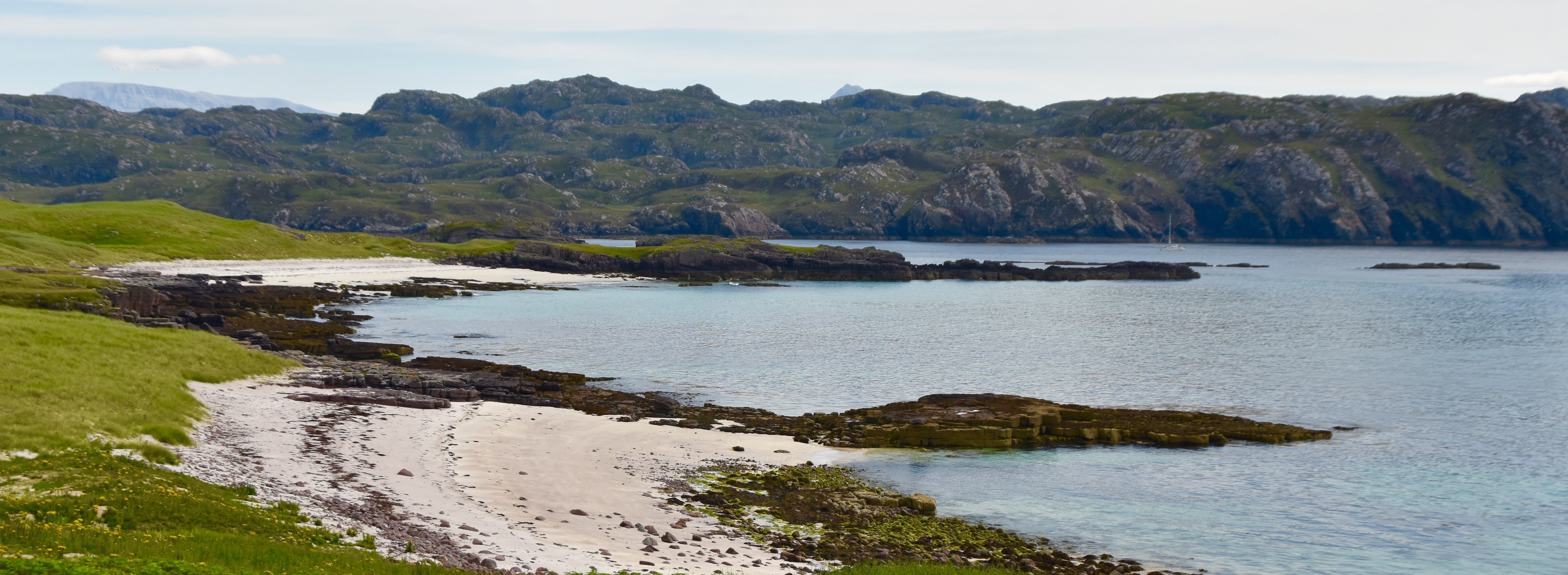
From here back to the old settlement the trail consists of a boardwalk upon which we came across dozens of little lizards, the last type of thing I expected to see in this austere environment. They are a species called the Common Lizard and as their name implies, common in Scotland. Who knew?
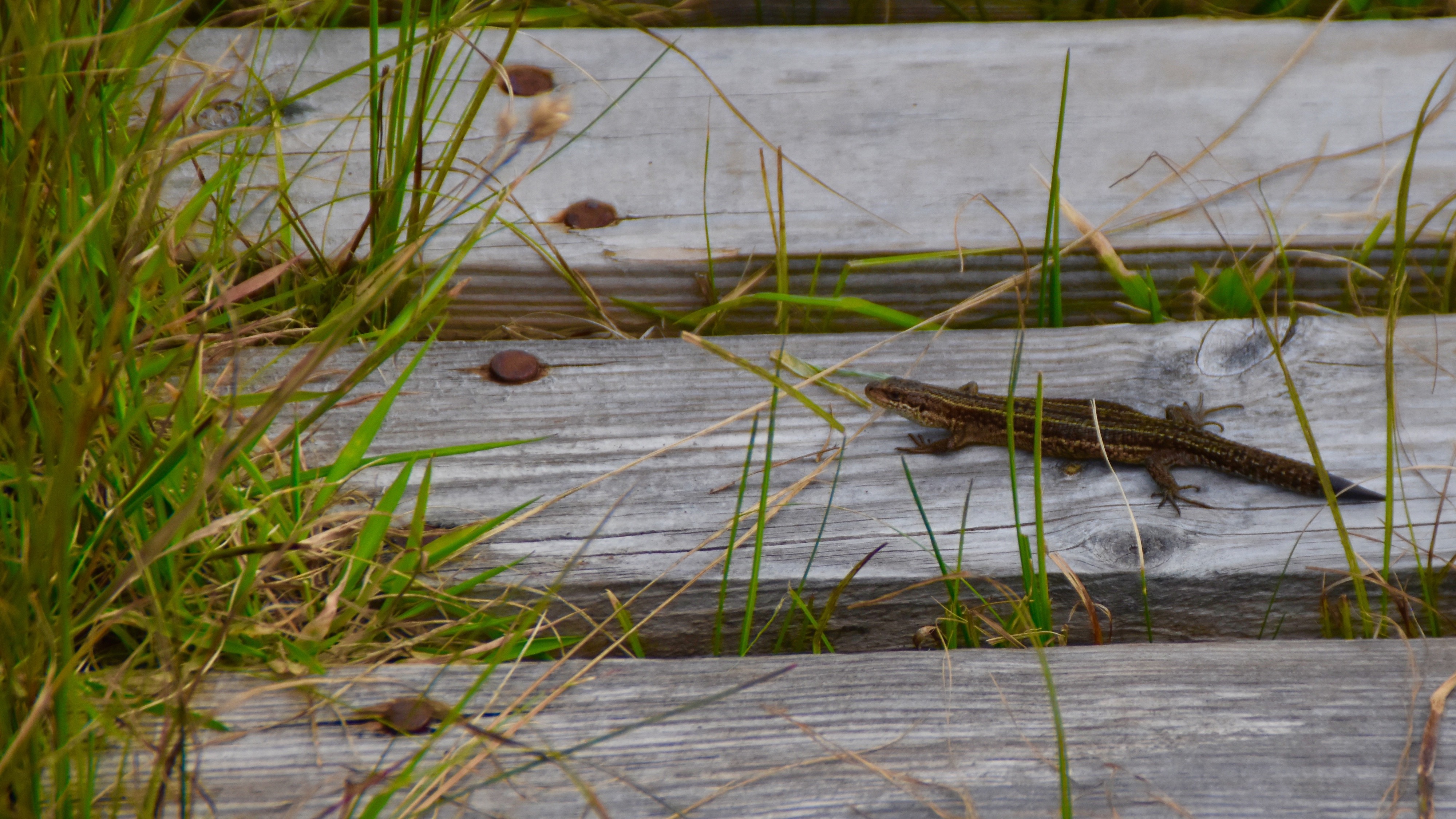
With tired legs, but exhilarated minds we arrived back at the pickup beach which because of the change in tides is used as an alternative to the closest beach. It too is a beautiful spot and I was almost sad to see the boat round the small cape and pull up on the beach.
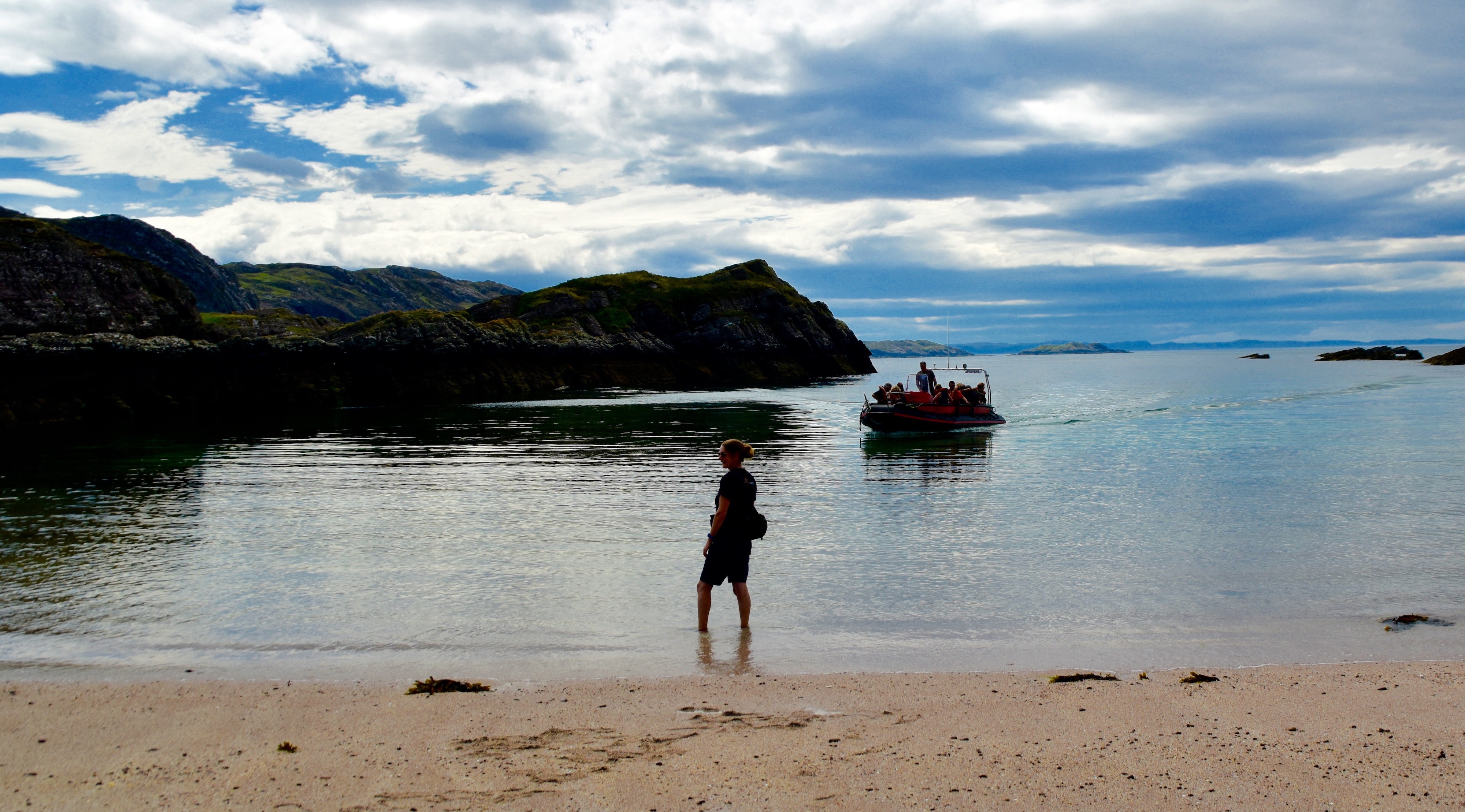
Seldom does a place live up to the very high expectations that I had put on Handa, but it exceeded them in every respect. If you doing the North Coast 500 you really do need to set aside a day to visit. You won’t regret it.

